There is simply too much great golf in the United States to recognize only 100 venues, so Golf Digest first launched its Second 100 Greatest Golf Courses ranking to accompany its trademark America’s 100 Greatest Golf Courses list. The results have been just as competitive for the Second 100—in this year’s edition, two courses, Forest Dunes Golf Club in Roscommon, Mich., and The Bridge in Sag Harbor, N.Y., both came less than a hundredth of a decimal point away from earning a spot in the coveted top 200.
The differences are finite throughout the ranking. No. 101 on this ranking, Crooked Stick Golf Club in Carmel, Ind., came two hundredths of a decimal point from topping No. 100 Spring Hill Golf Club in Wayzata, Minn. Yeamans Hall in Charleston, S.C., a Golden Age gem, is widely regarded as one of the best Seth Raynor courses anywhere after renovation work over the past few decades by Tom Doak and Jim Urbina—but even it has fallen out of our 100 Greatest for the first time in 10 years.
These are all great courses—and will likely be contending for a spot on our America’s 100 Greatest ranking for years to come.
Scroll down for the entirety of our America’s Second 100 Greatest courses list—and be sure to click through to each individual course page for bonus photography, reviews from our course panelists—and leave your own ratings on the courses you’ve played … so you can make your case for why a course should be higher or lower on your rankings.
(Parentheses indicate the course’s previous ranking.)
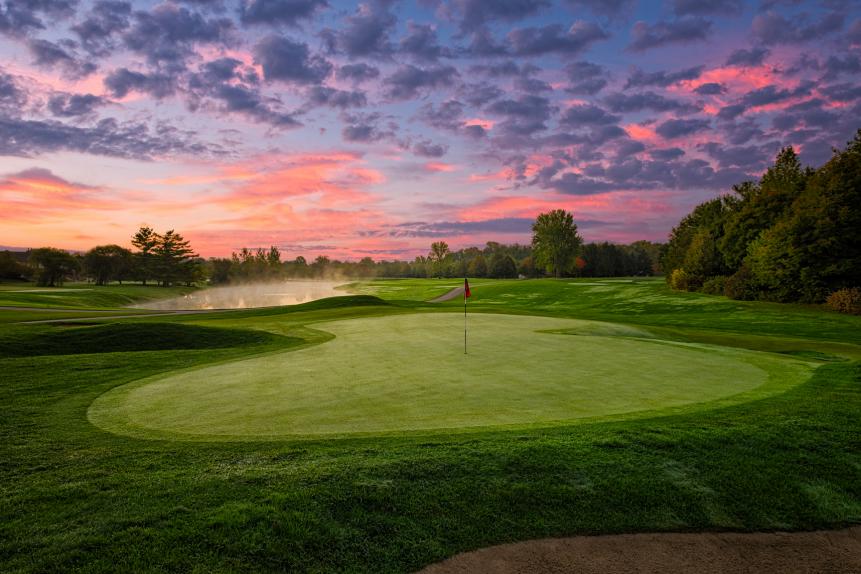 Dave Sansom Private 101. (106) Crooked Stick Golf Club Carmel, IN 4.4 14 Panelists
Dave Sansom Private 101. (106) Crooked Stick Golf Club Carmel, IN 4.4 14 Panelists
- 100 Greatest
- Best In State
Crooked Stick is the course where Pete Dye became Pete Dye. Conceived following an extended tour of British courses, Pete founded Crooked Stick, located the land, raised the funds and designed the course, rejecting conventional golf holes in favor of radical ones, using bulkheads of vertical telephone poles to create abrupt change and long expanses of sand to emulate dunes. What’s more, he built it himself, pressing even his wife, Alice, and young sons, Perry and P.B., into construction work. They opened the back nine first, in 1965, with MacKenzie-style boomerang greens; the front nine came two years later, with lines and angles appropriated from Donald Ross. Crooked Stick was the first Dye course to host a major championship, the 1991 PGA Championship, just a month before the Ryder Cup visited his brand-new Ocean Course at Kiawah Island. Tom Doak finished renovation work in late 2024, but the goal was to enhance and sharpen the Dye features rather than change them, so the changes may not be noticeable. View Course 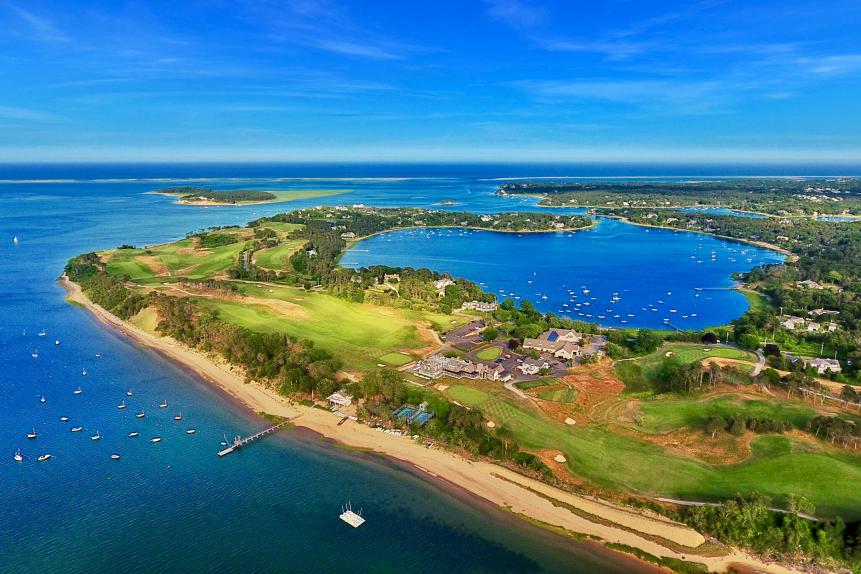 Courtesy of Jon Cavalier Private 102. (128) Eastward Ho! Chatham, MA 4.7 18 Panelists
Courtesy of Jon Cavalier Private 102. (128) Eastward Ho! Chatham, MA 4.7 18 Panelists
- Second 100 Greatest
- Best In State
This is Herbert Fowler’s most engaging 18-hole design. Routed on an isthmus in the Atlantic on Cape Cod, with each nine looping out and back along the ocean’s edge, the course’s rugged topography was splendidly used to pose challenges in stance, lie and depth perception. It’s now golf’s equivalent of a spine-tingling, neck-twisting roller coaster ride along a waterfront. If you come upon a flat lie at Eastward Ho!, it’s likely a tee box. View Course 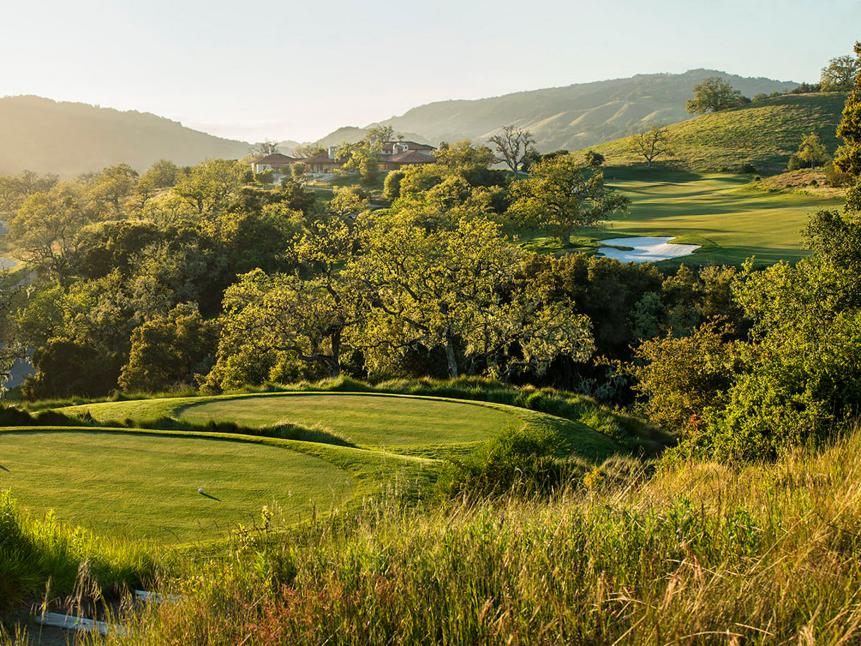 Allen Kennedy/Courtesy of The Preserve GC Private 103. (103) The Preserve Carmel, CA 4.2 21 Panelists
Allen Kennedy/Courtesy of The Preserve GC Private 103. (103) The Preserve Carmel, CA 4.2 21 Panelists
- Second 100 Greatest
- Best In State
Located a few miles inland from the glorious fivesome of 100 Greatest courses on California’s Monterey Peninsula (Cypress Point, Pebble Beach, Spyglass Hill and the two courses at Monterey Peninsula Country Club), The Preserve Golf Club is dramatically different, the only golf course contained within a 20,000-acre parcel of gentle hills and mammoth oaks. Fazio moved almost no earth here, so perfect was the routing established by Poellot and Sandy Tatum. The greens are subtle, the bunkering low key, the atmosphere one of absolute tranquility. View Course  LC Lambrecht Private 104. (99) Yeamans Hall Club Charleston, SC 4.5 13 Panelists
LC Lambrecht Private 104. (99) Yeamans Hall Club Charleston, SC 4.5 13 Panelists
- Best In State
- Second 100 Greatest
Though it contained a classic collection of Raynor favorites, including a Road Hole, a Biarritz, a Redan and even a Prize Dogleg (based on an entry from a 1914 magazine design contest), Yeamans Hall suffered from benign neglect for 50 years, with bunkers overgrown and greens both shrunk by mowing habits and mushroomed by topdressing. But in the later 1980s, the course superintendent discovered Raynor’s original plans in the clubhouse attic. Architect Tom Doak and his then-associate Jim Urbina used the plans to faithfully restore Raynor features. Urbina continues to implement restoration touches, and Yeamans Hall today is one of the country’s most polished and evocative examples of Raynor’s architecture on a relatively flat piece of lowcountry land. View Course  Laurence Lambrecht Private 105. (107) The Olde Farm Bristol, VA 4.7 19 Panelists
Laurence Lambrecht Private 105. (107) The Olde Farm Bristol, VA 4.7 19 Panelists
- Second 100 Greatest
- Best In State
The Olde Farm is old school in concept and execution. The terrain of this site was so nearly perfect for golf that designer Bobby Weed staked it out in just two days, driving around the property in his rental car. The routing hugs the flowing contours of old farmland beneath the foothills of the Appalachians, with holes hopping Sinking Creek a few times and edging slopes of the adjacent hills. It’s a lay-of-the-land design featuring some semi-blind shots, but Weed always provides a target somewhere in the distance. Bentgrass fairways are kept dry and firm and most greens are open in front to encourage the old-style game of low, running approach shots. View Course %20--%2014th%20hole%20-%20Larry%20Lambrecht.jpg.rend.hgtvcom.861.485.suffix/1573162562511.jpeg) Courtesy of Laurence Lambrecht Private 106. (102) Baltimore Country Club: East Lutherville Timonium, MD 4.5 22 Panelists
Courtesy of Laurence Lambrecht Private 106. (102) Baltimore Country Club: East Lutherville Timonium, MD 4.5 22 Panelists
- Best In State
- Second 100 Greatest
The East Course at Baltimore Country Club, also known as the Five Farms Course, was one of many outstanding A.W. Tillinghast designs nationally ranked for decades by Golf Digest. Still, even jewels need polishing now and then. The club brought in Keith Foster, perhaps the most modest of modern-day course architect. He chooses to work solely on restorations, no more than two at one time, and declines to self-promote. At Baltimore Country Club, Foster removed trees (which nearly everyone is doing these days), rebuilt greens to make them manageable with today’s green speeds, re-established Tillinghast’s bunkering, regrassed everything and brought back sparkle to the East Course. The par 3s here rank among the best Tillinghast built, as does the stretch run from the par-5 14th to the strong par-3 17th. View Course 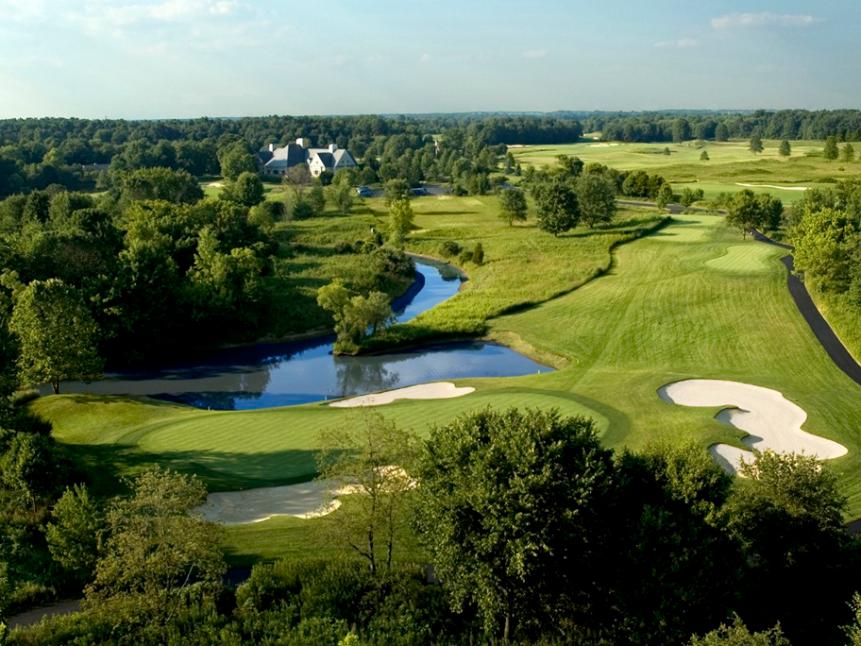 Courtesy of Double Eagle Club Private 107. (96) Double Eagle Club Galena, OH 4.4 9 Panelists
Courtesy of Double Eagle Club Private 107. (96) Double Eagle Club Galena, OH 4.4 9 Panelists
- Best In State
- Second 100 Greatest
Built by reshaping flat farm fields into gentle hills and valleys, Double Eagle benefits from plenty of elbow room. Some holes have double fairways that pose genuine alternate routes. Greens are benign enough in contours to allow them to be kept extremely fast. A delightfully thoughtful design, it closes with two great water-laden, risk-rewarding holes. The club name does not symbolize a golf term. Original owner John McConnell was a fortune hunter, and the Double Eagle was a rare doubloon discovered in a sunken treasure. View Course 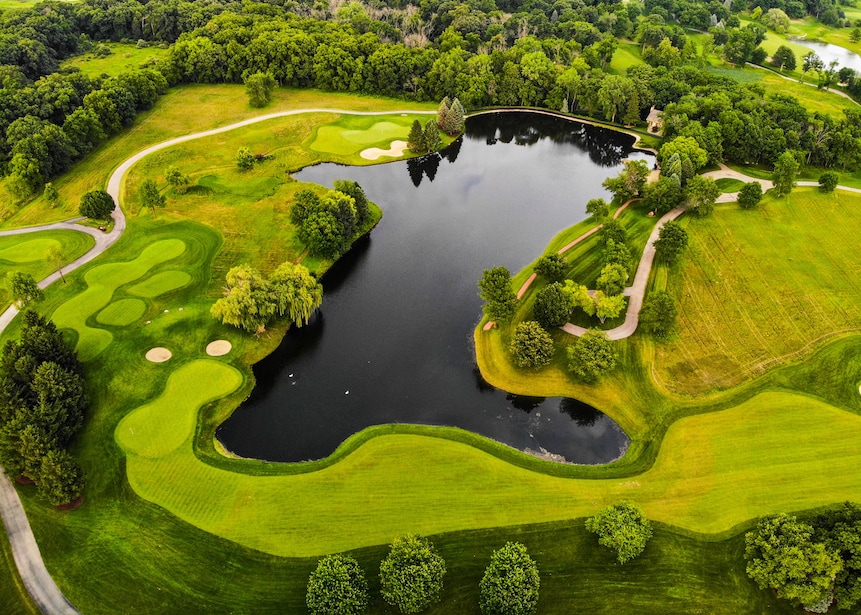 Courtesy of the club Private 108. (90) Rich Harvest Farms Sugar Grove, IL 4.2 9 Panelists
Courtesy of the club Private 108. (90) Rich Harvest Farms Sugar Grove, IL 4.2 9 Panelists
- Second 100 Greatest
- Best In State
Rich Harvest Farms began as a six-hole backyard course for computer billionaire Jerry Rich, was then expanded into a nine-fairway, 11-green layout that could be played multiple ways, and finally evolved into a conventional 18-hole layout strong enough to host the 2009 Solheim Cup and the 2017 NCAA Championship. With its polish and landscaping, some call Rich Harvest Farms the “Augusta of the Midwest,” but even Augusta National doesn’t have Rich Harvest’s flexibility, where every hole can play differently every day, some even from different angles and par. View Course %20-%2015th%20hole%20-%20Larry%20Lambrecht.jpg.rend.hgtvcom.861.574.suffix/1573162582732.jpeg) Courtesy of Laurence Lambrecht Private 109. (111) Jupiter Hills Club: Hills Tequesta, FL 4.3 8 Panelists
Courtesy of Laurence Lambrecht Private 109. (111) Jupiter Hills Club: Hills Tequesta, FL 4.3 8 Panelists
- Best In State
- Second 100 Greatest
As an old pro from Pine Valley who lost an Open at Merion, George Fazio blended features of both of those great courses into his design at Jupiter Hills, the high point of his second career as a golf course architect. Built from a distinct sand ridge that runs laterally along the Atlantic seacoast north of West Palm Beach, Jupiter Hills was inexpensive to construct. The terrain was so good, only 87,000 cubic yards of earth were moved. A decade after it opened, George Fazio retired near the property, and couldn’t resist constantly tinkering with it. He ultimately removed many of its most unique, Pine Valley-like aspects. His nephew Tom Fazio, who had assisted on the original, has renovated the design several times, most recently in 2020 with new bunkering strategies. The open sandscapes of the original design remain but they’re cleaned up, and the effect is one more of polish than rugged terror. View Course 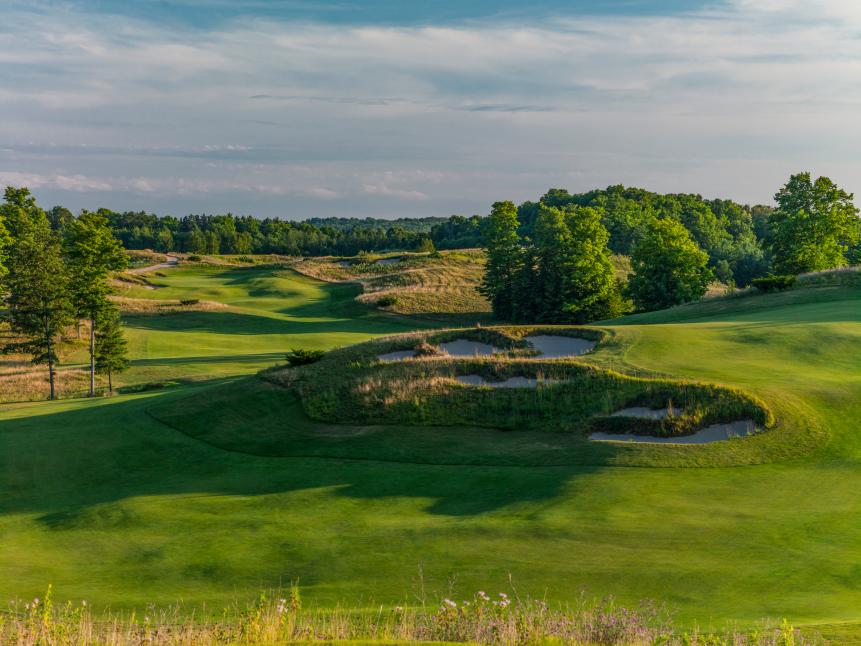 LC Lambrecht Private 110. (121) Kingsley Club Kingsley, MI 4.6 18 Panelists
LC Lambrecht Private 110. (121) Kingsley Club Kingsley, MI 4.6 18 Panelists
- Best In State
- Second 100 Greatest
Expertly routed across glacial domes and over kettle holes, Kingsley Club opens with a split fairway, a high-right avenue separated from a low-left one by a cluster of sod-face bunkers. It’s an attention grabber than is repeated in various fashions throughout the round. For instance, the hilltop green on the short par-3 second seems tiny in comparison to the deep shaggy bunkers surrounding it. The long par-3 fifth plays over a valley with a tongue of fairway ready to repel any shot that comes up short. The par-4 sixth seems to slant in one direction, then cant in the other direction once past a lateral ridge that runs down the fairway. Every hole has its own character. With roughs of tall fescue and occasional white pines and hardwoods, Kingsley is all natural and all absorbing, a thoughtful design by Mike DeVries, who grew up in the area playing Crystal Downs. View Course 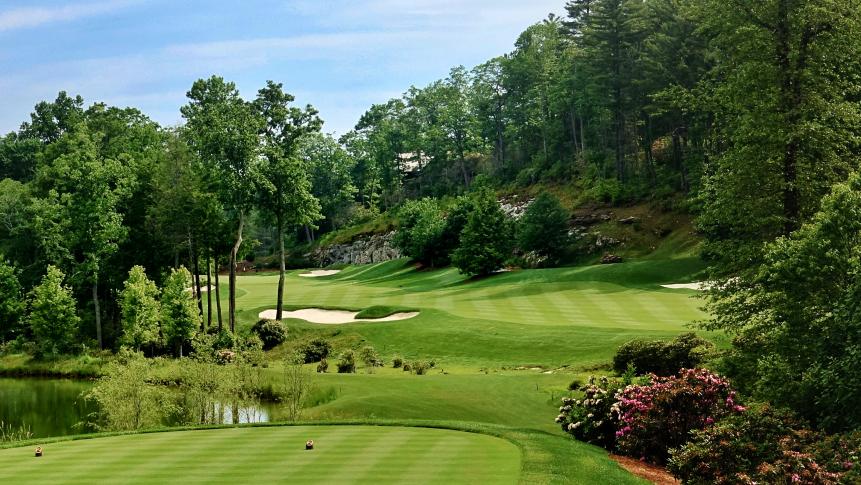 Courtesy of Jon Cavalier Private 111. (113) Mountaintop Golf & Lake Club Cashiers, NC 4.5 9 Panelists
Courtesy of Jon Cavalier Private 111. (113) Mountaintop Golf & Lake Club Cashiers, NC 4.5 9 Panelists
- Second 100 Greatest
- Best In State
Unlike nearby Wade Hampton Golf Club, the Tom Fazio design that was routed through natural valleys to forego the need for dynamite, Mountaintop was blasted from solid rock. Some holes were forged through slopes of the Blue Ridge Mountains, like the par-4 sixth, edged by a 30-foot-high wall of granite on the right. Conservative estimates are that all that rock removal raised the cost of construction of this continuous-18 layout to $1 million per hole. The opening tee shot drops 100 feet, and six holes also play over a deep gorge formed by Hurricane Creek. Mountaintop proves there is no property too rugged for Tom Fazio. View Course 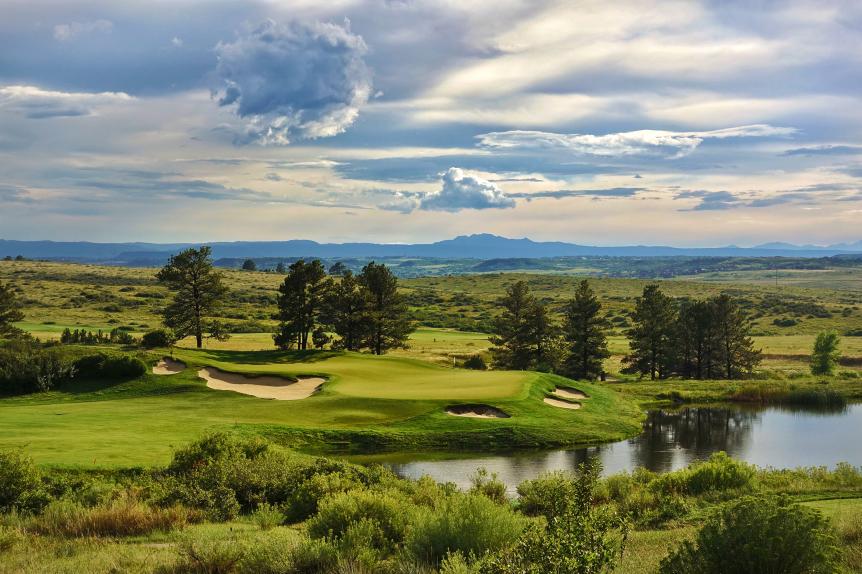 Courtesy of Jon Cavalier Private 112. (120) Colorado Golf Club Parker, CO 4.3 16 Panelists
Courtesy of Jon Cavalier Private 112. (120) Colorado Golf Club Parker, CO 4.3 16 Panelists
- Second 100 Greatest
- Best In State
The par-4 10th at Colorado Golf Club, playing downhill off the tee to a green hanging on a slope, with the Colorado Rockies in the far distance, has not a single bunker. Yet it sets the tone for what might well be Coore and Crenshaw’s finest example of how to massage a great golf course from topography that many would have considered ordinary. These designers made this stretch of Front Range southeast of Denver extraordinary. They ran fairways across sagebrush hills that are dotted with pines. They positioned greens on buttes and the far sides of barrancas. Colorado Golf Club is a second-shot course where seemingly generous landing areas can result in awkward hanging lies for approach shots to greens that run left or right or even away from the direction of play. The massive par-5 first is one of the most exciting first holes in a time zone known for exciting opening holes, and it’s followed by a short cross-ravine par 3 benched into a hillside like its inspiration, the second at Prairie Dunes. In 2019, the course hosted the USGA Mid-Amateur. View Course 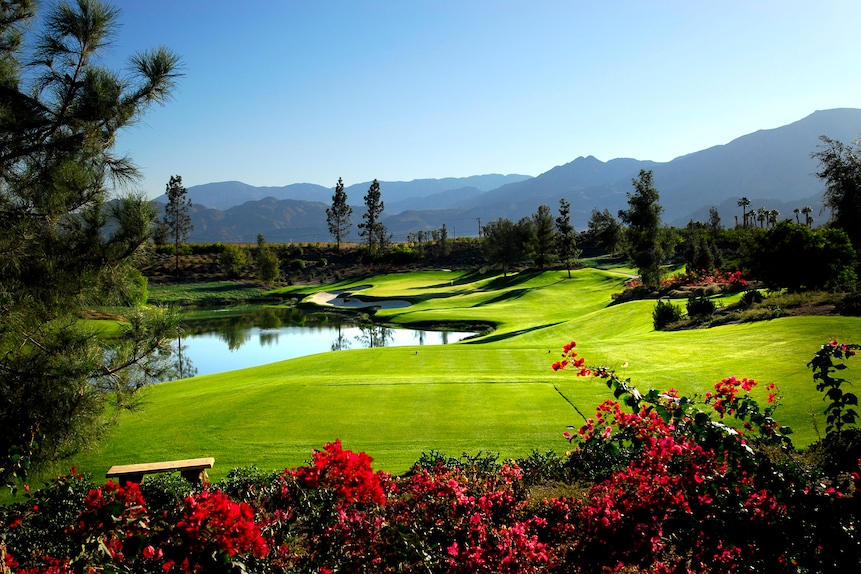 Courtesy of Henebry Private 113. (108) The Madison Club La Quinta, CA 4.7 11 Panelists
Courtesy of Henebry Private 113. (108) The Madison Club La Quinta, CA 4.7 11 Panelists
- Best In State
- Second 100 Greatest
When developer Michael Meldman first showed Tom Fazio the land for the proposed Madison Club, an arid, barren desert outside Palm Springs, he told Fazio, “Let’s do a modern-day Shadow Creek.” By “modern-day,” he meant one that would feature homesites along the holes. So Fazio did what he’d done in Las Vegas at Shadow Creek. He had crews dig into the desert and pile up dirt to the sides. But this time, the cuts became channels wide enough for fairways, with pads for home sites perched above holes on surrounding ridgelines. After trucking in and planting mature trees and sodding everything, Fazio was satisfied The Madison Club looked nothing like a typical Palm Springs residential layout. Said Fazio, “If you’re given a free hand in the Coachella Valley, what do you do? You do everything. You move the earth, plant the trees and carve out the streams. You create the entire space. There’s so much here.” View Course 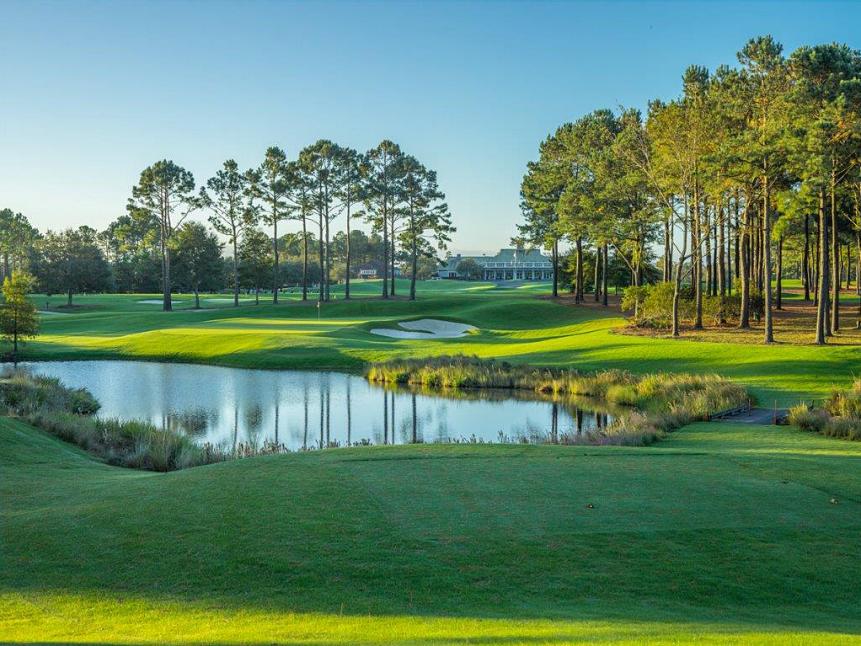 Courtesy of Eagle Point GC Private 114. (104) Eagle Point Golf Club Wilmington, NC 4.5 12 Panelists
Courtesy of Eagle Point GC Private 114. (104) Eagle Point Golf Club Wilmington, NC 4.5 12 Panelists
- Best In State
- Second 100 Greatest
From Golf Digest Architecture Editor emeritus Ron Whitten: I played Eagle Point Golf Club, a Tom Fazio design, soon after it became ranked on Golf Digest’s 100 Greatest but before it hosted the 2017 Wells Fargo Championship as a one-time substitute for Quail Hollow Club, which hosted the PGA Championship that summer. I walked it with caddies, Director of Golf Billy Anderson and one of the club’s founders (and later president) Bobby Long (who was also green chairman at Seminole and a member of Augusta National.) Just before we teed off, golf architect Andrew Green came over and introduced himself. We’d never met. He was designing a short-game facility for the club. Though it may seem strange that Fazio’s firm wasn’t retained to do that, it helps to know that Andrew’s brother, Sam, was Eagle Point’s course superintendent at the time.
Read the complete review, plus comments from our panelists, here.
View Course 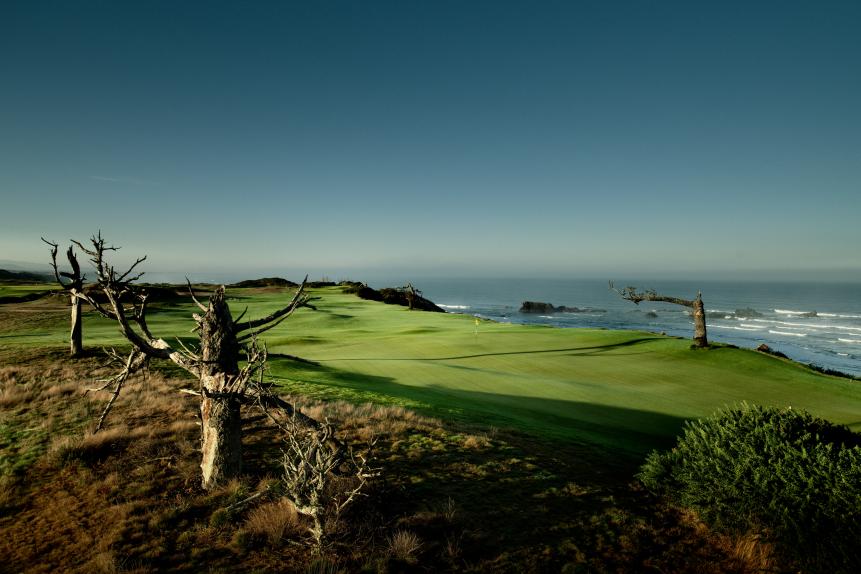 Dom Furore Public 115. (NEW) Sheep Ranch Bandon, OR 4.3 30 Panelists
Dom Furore Public 115. (NEW) Sheep Ranch Bandon, OR 4.3 30 Panelists
- 100 Greatest Public
- Second 100 Greatest
- Best In State
Sheep Ranch began life as a different Sheep Ranch in the early 2000s, a rag-tag, cross-country, 13-hole course with no irrigation built by Tom Doak on a bluff just north of what would later become Old Macdonald. It was a little-used recreation that only insiders knew about. Mike Keiser tapped Bill Coore and Ben Crenshaw to convert it into Bandon Dunes’ fifth regulation 18-hole course and Coore and Crenshaw’s second. Spread across an open, windswept plateau, using many of the same greensites, Coore managed to triangulate the holes in such a way that nine now touch the cliff edge along the Pacific Ocean. Extremely wide fairways, large putting surfaces and sandless bunkers allow the exposed course to be playable in extreme winds. Though it’s slipped behind its Bandon brethren in the rankings, Sheep Ranch nevertheless accomplishes the most difficult of feats for resort courses—distinction among equals. View Course
Jim Engh’s architecture is all about turning fantasies into realities, and Black Rock delivers on that goal like few others, with some bobsled-run fairways (where one can putt from landing area downhill to the green), rollicking putting surfaces framed by squiggly bunkers and a par-4 11th pinched by towering rock formations that bring to mind a pinball machine. Unusual and controversial (it won Best New Private in 2003 ahead of No. 15 Friar’s Head and No. 83 Dallas National), Black Rock is a thrilling round of golf.
View Course 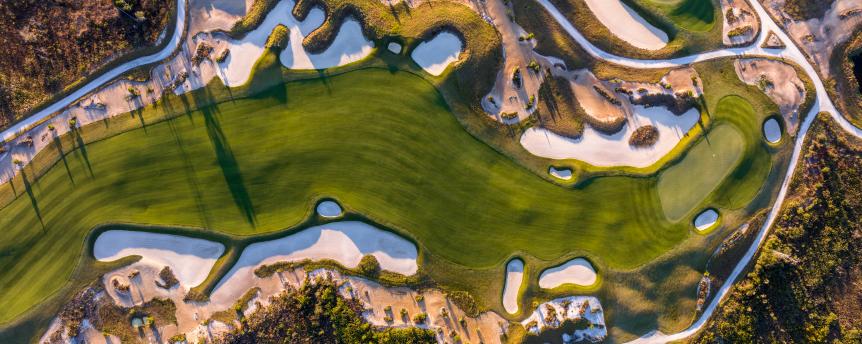 Brian Oar Private 142. (NEW) The Dye Course at White Oak Yulee, FL
Brian Oar Private 142. (NEW) The Dye Course at White Oak Yulee, FL
- Best In State
The Dye Course at White Oak, our 2022 Best New Private Course winner, is one of the most exclusive golf courses to be built in recent memory. It’s located on the border of Florida and Georgia outside Jacksonville, in almost complete natural isolation. It has no members, no on-site clubhouse (or any other structures on or near the course), and hardly anyone has played it except for personal invitees of owner Mark Walter and several dozen Golf Digest panelists, who visited between October 2021 and September 2022. Walter engaged the late Pete Dye to design the course in 2013, but by the time construction began in 2017, Dye’s health had deteriorated, and he was no longer able to be active in building it. The job of finishing White Oak fell to longtime confidant and veteran course builder Allan MacCurrach, who interpreted Dye’s wishes based on extensive discussions from previous years and his own wealth of experience working with Dye on over 20 projects. Intensely private and almost entirely off the radar until now, this exclusive video tour captured by photographer Brian Oar offers the first public looks at The Dye Course at White Oak.
Read our full review, including panelist comments, here.
View Course %20-%2012th%20hole%20-%20courtesy%20of%20the%20club.jpg.rend.hgtvcom.861.431.suffix/1573162816013.jpeg) Courtesy of the club Private 143. (156) Whisper Rock Golf Club: Upper Course Scottsdale, AZ 3.9 7 Panelists
Courtesy of the club Private 143. (156) Whisper Rock Golf Club: Upper Course Scottsdale, AZ 3.9 7 Panelists
- Best In State
- Second 100 Greatest
Whisper Rock’s Upper Course was intended, as the club’s second 18, to specifically test its low-handicap and PGA Tour pro membership, but Tom Fazio couldn’t resist being a crowd-pleaser, so although he designed 18 holes with demanding angles to diagonal fairways from the back tees, his landing areas for average golfers are generous and most greens are cradled with ample chipping areas. All players enjoy the scenic beauty of this patch of Sonoran Desert, with the front nine holes framed by dry washes and a four-hole stretch on the back woven through astonishing towers of balanced granite boulders. “That’s a beautiful, beautiful stretch, going up into those boulders and back down towards Pinnacle Peak,” said Fazio at the grand opening. “But I’m proud of the entire course, as it’s got a whole bag of different looks.” Whisper Rock’s other 18, the older Lower Course, is ranked No. 174.
View Course  Walt Beazley Private 144. (NEW) Blessings Golf Club Fayetteville, AR 4.4 14 Panelists
Walt Beazley Private 144. (NEW) Blessings Golf Club Fayetteville, AR 4.4 14 Panelists
- Second 100 Greatest
- Best In State
George Thomas conceived of the idea of a “course within a course” when designing Los Angeles Country Club in the early 1920s, creating various tees for different holes that changed the angles of play and even the par values on different days. That’s part of the concept of Blessings in northwest Arkansas, where Robert Trent Jones II built a multifaceted routing that can be played in a variety of lengths and combinations intended to challenge the game’s best collegiate players (Blessings regularly hosts NCAA tournaments and was the site of the 2019 National Championships), including one setup with a USGA course rating of 80.9 and a 155 slope. Several holes cross over each other in the manner of old links courses, though there’s nothing linksy about the rural, wooded and sloping property bisected by Clear Creek. When you build a course for an individual owner—in this case John Tyson of Tyson Foods—you get to break the rules. In 2018, architect Kyle Phillips remodeled Blessings to make it more walkable, creating a new first hole, relocating several greens, and shifitng and rebuilding bunkers to increase strategic diversity. View Course  Russell Kirk Private 145. (147) Fox Chapel Golf Club Pittsburgh, PA 4.4 17 Panelists
Russell Kirk Private 145. (147) Fox Chapel Golf Club Pittsburgh, PA 4.4 17 Panelists
- Best In State
- Second 100 Greatest
When Fox Chapel hosted the 1985 U.S. Women’s Amateur Championship (won by Michiko Hattori), some observers were disappointed that its Seth Raynor design seemed so ordinary. Greens had become circular, many bunkers were overgrown and those that still existed bore fancy modern shapes. Most alarming, the Fox’s 17th, originally a Biarritz hole, had the front portion of the green and trench mowed as fairway. In the early 1990s, architect Brian Silva was called in to restore Raynor’s features. He reclaimed green dimensions, including the Biarritz, and recaptured original bunkers, particularly the necklace wrapped around the front of the 11th (“Short”) green. Tom Marzolf, of Tom Fazio Design, has continued to refine and draw forth more Raynor-inspired shaping and bunkering; this latest work debuted in the fall of 2020 with profound enhancements to the Punchbowl second (a par 5), Redan sixth, the Lions Mouth green complex at nine, Bottle 16th and the Redan. View Course Private 146. (177) Moraine Country Club Dayton, OH 4.5 20 Panelists
- Best In State
- Second 100 Greatest
Nipper Campbell, one of the all-time great names in golf, was a prolific golf architect in Ohio, but is mainly remembered for his design of Moraine, where he also served briefly as head pro (he was also highly involved in the expansion of The Country Club in Brookline, site of the 2022 U.S. Open). As the name suggests, Moraine Country Club was created on glacial moraine topography, which over the years had become obscured by massive tree planting. Keith Foster, soft spoken but carrying a big chainsaw, wiped out nearly all the trees to reveal all the domed hills that members had never noticed during play. Moraine sits right next door to NCR Country Club, which was built by Dick Wilson in the early 1950s. At the time, a Moraine assistant pro would sneak over and watch the construction progress. He finally told Wilson he’d like to get into that golf design business, so Dick hired him away. The assistant pro was Joe Lee. View Course %20and%20the%2015th%20hole%20(background)%20-%20courtesy%20of%20the%20club.jpg.rend.hgtvcom.861.485.suffix/1573162755048.jpeg) Courtesy of the club Private 147. (140) Aldarra Golf Club Sammamish, WA 4.4 24 Panelists
Courtesy of the club Private 147. (140) Aldarra Golf Club Sammamish, WA 4.4 24 Panelists
- Second 100 Greatest
- Best In State
Although he owned his own turboprop for over a decade, it wasn’t until the late 1990s that Tom Fazio agreed to work in the Pacific Northwest. Previously, it seemed just too far to travel for someone with six children at home. But former Seattle Supersonics basketball star Jack Sikma convinced Fazio to help his group build a golf-only, non-residential 18 on land east of Seattle. Perhaps it helped that the land had been previously owned by aviation pioneer Bill Boeing, land he had called the Aldarra Farm. Fazio’s design, called The Member’s Club at Aldarra until recent years, quickly became known for its last four holes, dubbed “The Gauntlet.” They consist of a long, stout par 3 (with an old stone farm silo near the green), a par 4 along wetlands, a reachable par 4 with stacked sod bunkers before the green and a long closing par 4 with two forced carries over ravines. View Course  Dave Sansom Private 148. (136) Atlanta Athletic Club: Highlands Johns Creek, GA 4.4 17 Panelists
Dave Sansom Private 148. (136) Atlanta Athletic Club: Highlands Johns Creek, GA 4.4 17 Panelists
- Best In State
- Second 100 Greatest
No course on our rankings has highlighted the value of new turfgrasses better than the Highlands Course at Atlanta Athletic Club. It sets the standard for quality everyday conditions as well as for major championships at Southern venues. Its tees and fairways are Zorro Zoysia, which can withstand Atlanta’s coldest winter days. Greens are state-of-the-art TifEagle Bermuda, smooth and pure. Approaches and surrounds of greens are TifGrand Bermuda, which allows them to be mowed very tight for additional bounce. The rough is Tifway 419 Bermuda, a great old standby. The club also recently upgraded its irrigation system. Because each turf has different water demands, a precise individual-head system was installed, each head controlled by the superintendent with a smartphone app, applying moisture only where needed and thus saving water and money. No longer will an errant shot at Atlanta Athletic Club land behind an irrigation box. There are none anymore. The club recently announced the current Rees Jones-developed architecture will also be given a refresh when Andrew Green begins a major remodel in 2028. View Course  Courtesy of Dave Sansom Public 149. (139) Kapalua: Plantation Lahaina, HI 4.5 32 Panelists
Courtesy of Dave Sansom Public 149. (139) Kapalua: Plantation Lahaina, HI 4.5 32 Panelists
- Best In State
- 100 Greatest Public
- Second 100 Greatest
From Golf Digest Architecture Editor emeritus Ron Whitten:
Most golf fans are familiar with Kapalua Golf Club’s Plantation Course, home of the PGA Tour’s opening event each year. Located on the north shore of the Hawaiian island of Maui, the Plantation was built from open, windswept pineapple fields on the pronounced slope of a volcano and is irrigated by sprinklers pressured solely by gravity. As the first design collaboration by Bill Coore and Ben Crenshaw, it unveiled their joint admiration for old-style courses. The blind drive on the fourth, the cut-the-corner drives on the fifth and sixth are all based on tee shots found at National Golf Links. So, too, are its punchbowl green and strings of diagonal bunkers. It’s also a massive course, built on a huge scale, Coore says, to accommodate the wind and the slope and the fact that it gets mostly resort play. So it’s a big course. But what sets it apart in my mind are the little things. When I played the course years ago with Coore, it took only one hole for me to appreciate one of its subtleties. We were on the tee of the par-3 second, an OK hole but nothing riveting, nothing like the canyon-carry par-3 eighth or the ocean-backdropped par-3 11th. The second sits on a rare flat portion of the property. The green sits at a diagonal, angling left to right, and there’s a string of bunkers staggering up the right side of the green. The first bunker appears to be directly in front of the green but is actually 40 yards short of it. When pointed out to me, I called it Gingerbread. Bill disagreed.
Explore our complete review here—including bonus photography and ratings from our expert panelists.
View Course
David Kidd began building a second 18 at Wisconsin’s Sand Valley Resort just before Coore and Crenshaw had completed their 18, which would be named Golf Digest’s Best New Course of 2017. Kidd was intent on topping their work, so he gave his meandering layout enormous fairways, big accessible greens and visually-unique hillsides of exposed sand, “mammoth dunes” that became the course moniker. “This could be the best course I and my team have yet created,” Kidd wrote in late 2017. “We can’t wait for the critics to decide if they agree.” They were disappointed with results of Golf Digest’s 2018 Best New Course survey, which placed Mammoth Dunes second behind Streamsong (Black). But balloting for Golf Digest’s 100 Greatest continued for an additional month after the close of Best New, and additional evaluations pushed Mammoth Dunes ahead of Streamsong (Black), which is now ranked No. 178.
View Course 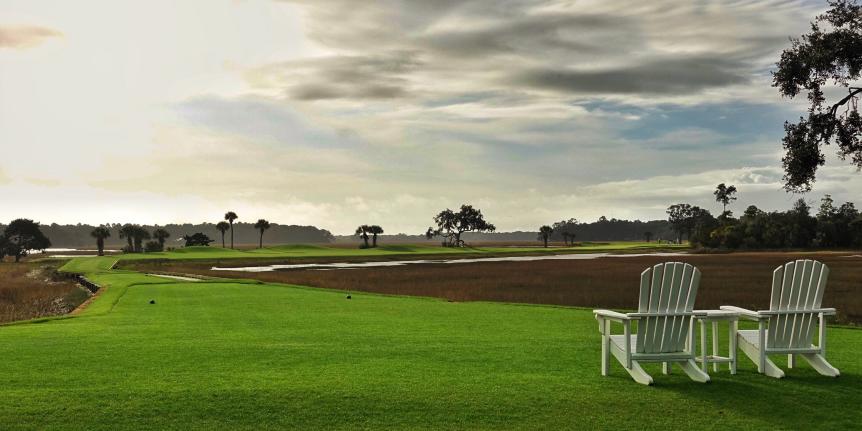 Jon Cavalier Private 159. (164) Secession Golf Club Beaufort, SC 4.5 17 Panelists
Jon Cavalier Private 159. (164) Secession Golf Club Beaufort, SC 4.5 17 Panelists
- Second 100 Greatest
- Best In State
Pete Dye and his son P.B. did the early routing of Secession, but when they left in a dispute with the developer, Bruce Devlin, a PGA Tour veteran who’d previously designed courses with Robert von Hagge, stepped in and finished something much in keeping with the then-prevailing Dye philosophy of low profile architecture. Greens were set at ground grade, protected by low humps and pot bunkers with vertical stacked-sod faces. True to his Australian (New South Wales) roots, Devlin also left open the fronts of greens for running approach shots. The site itself is a peninsula in marsh, with several holes on individual islands. Secession demands a complete game, both aerial and ground, particularly in steady ocean breezes. View Course  Courtesy of Rob Tipton Public 160. (142) Harbour Town Golf Links Hilton Head Island, SC 4.5 42 Panelists
Courtesy of Rob Tipton Public 160. (142) Harbour Town Golf Links Hilton Head Island, SC 4.5 42 Panelists
- Best In State
- 100 Greatest Public
- Second 100 Greatest
In the late 1960s, Jack Nicklaus landed the design contract for Harbour Town, then turned it over to his new partner, Pete Dye, who was determined to distinguish his work from that of rival Robert Trent Jones. Soon after Harbour Town opened in late November 1969 (with a victory by Arnold Palmer in the Heritage Classic), the course debuted on America’s 100 Greatest as one of the Top 10. It was a total departure for golf at the time. No mounds, no elevated tees, no elevated greens—just low-profile and abrupt change. Tiny greens hung atop railroad ties directly over water hazards. Trees blocked direct shots. Harbour Town gave Pete Dye national attention and put Jack Nicklaus, who made more than 100 inspection trips in collaborating with Dye, in the design business. Pete’s wife, Alice, also contributed, instructing workers on the size and shape of the unique 13th green, a sinister one edged by cypress planks. Beginning two weeks after the conclusion of the 2025 RBC Heritage, an extension restoration started at Harbour Town, overseen by Davis Love III and his design company. View Course  Courtesy of the club Private 161. (191) Southern Highlands Golf Club Las Vegas, NV 4.3 9 Panelists
Courtesy of the club Private 161. (191) Southern Highlands Golf Club Las Vegas, NV 4.3 9 Panelists
- Best In State
Although Southern Highlands was billed as a co-design between Robert Trent Jones Jr. and his famous father, in truth the senior Jones, who would die in 2000, was retired by the time construction on this lavish Las Vegas layout began in 1998. Still, there’s a plaque on the 12th hole proclaiming it to be the last hole Mr. Jones ever designed. Regardless, Southern Highlands reflects his son Bobby’s design tenets and visuals. The Highlands was always intended to be Bobby’s answer to Tom Fazio’s Shadow Creek (ranked No. 27), but with a more financially sensible real estate component. It has the same Carolina-pines motif, the same sprawling, overly elaborate bunkers, the same kinetic water features and, if anything, even more elevation change, with the 11th tee box sitting ten stories above the fairway and providing an unobstructed view of the Las Vegas Strip several miles to the north. View Course 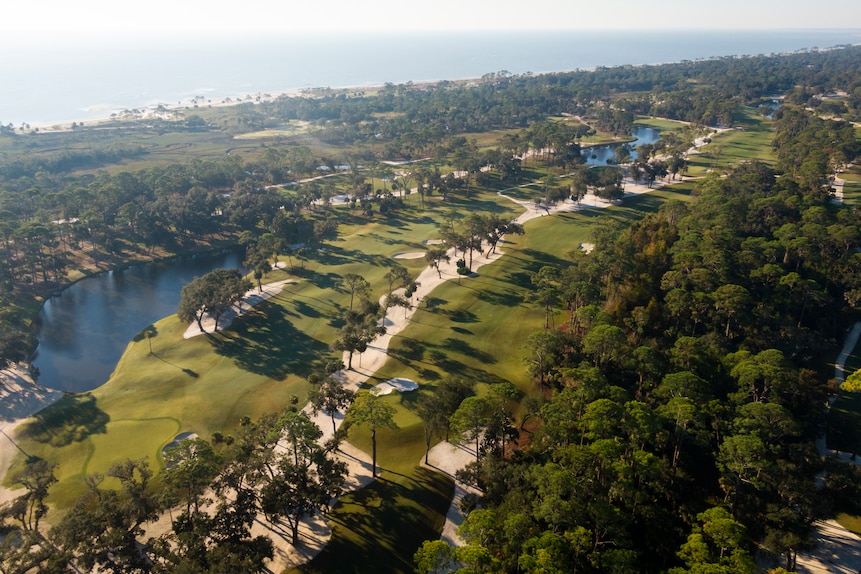 Courtesy of the club Private 162. (160) Ocean Forest Golf Club Sea Island, GA 4.5 21 Panelists
Courtesy of the club Private 162. (160) Ocean Forest Golf Club Sea Island, GA 4.5 21 Panelists
- Second 100 Greatest
- Best In State
Ocean Forest occupies one of the premier oceanside settings on the East Coast. Originally designed by Rees Jones, the fairways laterally traverse the site’s interior pines, skirting marshes and breaking out in memorable moments to the shore of the broad Hampton River inlet before finishing along the Atlantic Ocean at 17 and 18. The course had been ranked among America’s 100 Greatest for 12 years, then a fixture among our top 200 courses nationally (and in the top six in Georgia), but by 2023 it was in need of updates and revisions so the club opted to have Beau Welling initiate some major changes. The main order of business was to try to better connect the formerly perched up green sites to the low, rambling terrain to be more accessible for members, enlarging them in the process. Welling also removed most of the Bermuda roughs and added open sandscapes along the holes to emulate the beach atmosphere, reconceived the par-3 17th on the water and elevated the 18th fairway so the ocean was visible above the dune line. The alterations combine to give the architecture a stronger seaside character that’s on par with the magical property. View Course 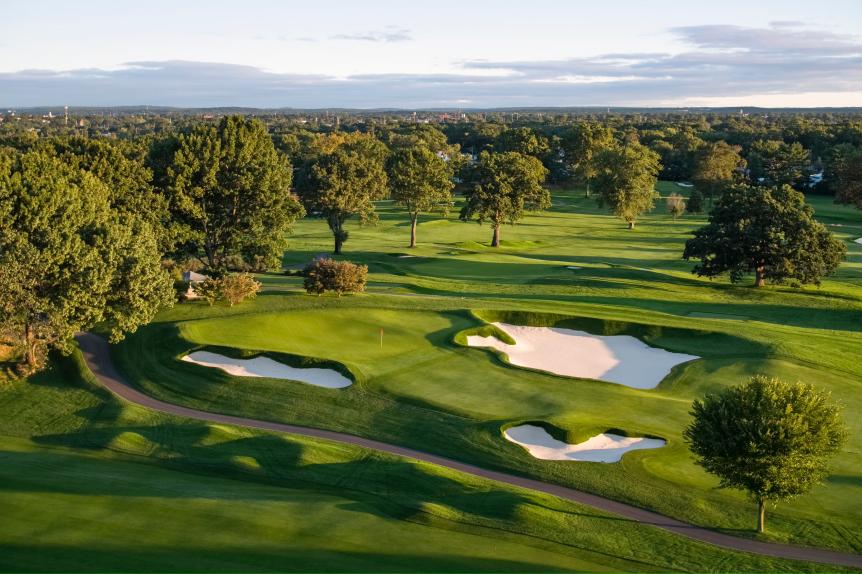 Private 163. (166) Wannamoisett Country Club Rumford, RI 4.6 25 Panelists
Private 163. (166) Wannamoisett Country Club Rumford, RI 4.6 25 Panelists
- Best In State
- Second 100 Greatest
Built on just 89 acres, barely enough for 18 holes, no room for even a small practice range, with lots of bunkers and tiny greens, the Donald Ross-designed Wannamoisett has long held the reputation of the Sugar Ray Leonard of golf courses, compact but carrying plenty of punch. The course has received a number of renovations over the decades, the latest by Andrew Green in 2021 that included green and fairway expansions, the rebuilding of the bunkers in a more authentic Ross style (based on the architect’s field notes and sketches) and the continuation of an existing tree clearing program. A long-time host to one of amateur golf’s premier events, the Northeast Amateur Invitational, Wannamoisett is considered today the best par-69 layout in the land. View Course 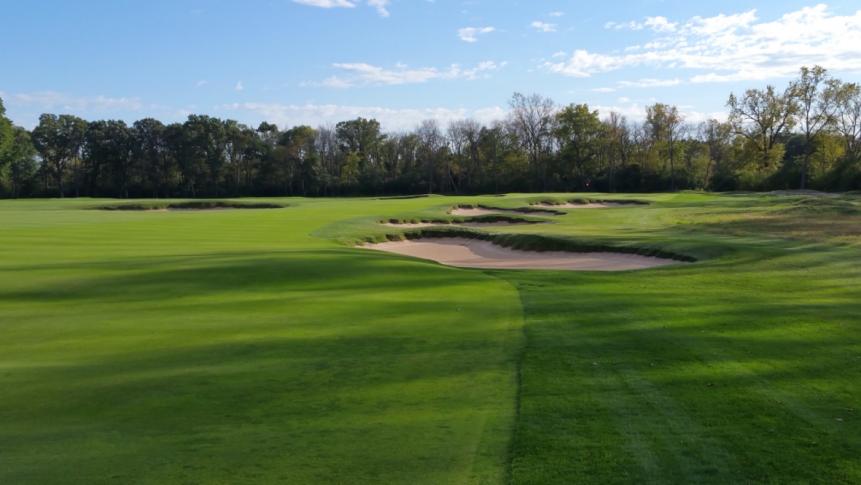 Drew Rogers Private 164. (NEW) Old Elm Club Highland Park, IL 4.5 10 Panelists
Drew Rogers Private 164. (NEW) Old Elm Club Highland Park, IL 4.5 10 Panelists
- Second 100 Greatest
- Best In State
Old Elm, a male-only club on Chicago’s north side, has one of the country’s most unique design pedigrees. British architect Harry S. Colt laid out the course in 1913 on one of his few visits to the U.S., collaborating on-site with Donald Ross, who to that point had designed courses in the Northeast and at Pinehurst but was not nationally known. After Colt departed, Ross, consulting Colt’s drawings and design notes, oversaw the construction of the holes. Over the last decade architect Drew Rogers has helped reclaim the property’s original spaciousness by removing hundreds of trees that had begun to clog the holes and expand fairways and greens. With the help of designer Dave Zinkand, they recreated the rough and rugged bunker edging that Colt was known for in his best U.K. designs. Their work has reestablished Old Elm as one of the top courses in the golf-rich Chicago area. View Course 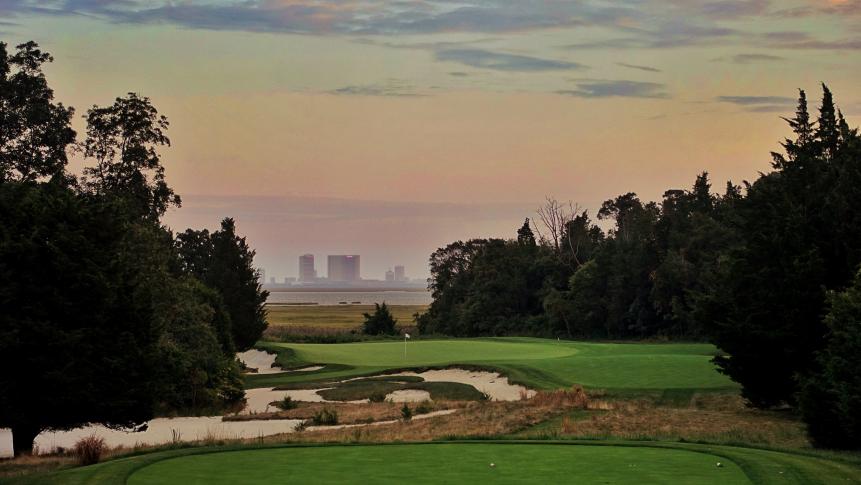 Courtesy of Jon Cavalier Private 165. (131) Galloway National Golf Club Absecon, NJ 4.4 12 Panelists
Courtesy of Jon Cavalier Private 165. (131) Galloway National Golf Club Absecon, NJ 4.4 12 Panelists
- Second 100 Greatest
- Best In State
Galloway National occupies a very fine stretch of South Jersey-pine barrens, a site that before construction had been compared to nearby Pine Valley. But Tom Fazio felt the land more favorably compared with that of Pinehurst, and his dream was to reshape this course the old-fashioned way, using horses and slip-scrapers much as had done a century ago at Pinehurst. But the economics and timetable didn’t allow him such a fanciful luxury. Instead, bulldozers were used to shove the sand around into graceful fairways and low-slung, fall-away greens. Pines and roughs of pine needles frame most holes and the eastern flank of the course runs directly along a tidal marsh that leads to the Atlantic. Galloway National now has enough exposed sand, by the way, that golfers today are reminded of both Pinehurst and Pine Valley. View Course 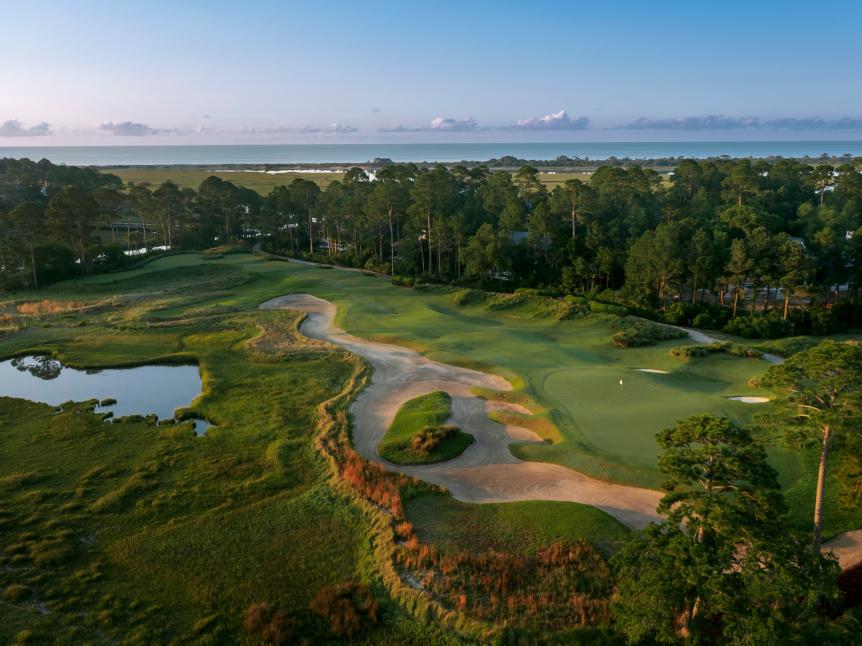 USGA/Russell Kirk Private 166. (150) Kiawah Island Club: Cassique Johns Island, SC 4.5 11 Panelists
USGA/Russell Kirk Private 166. (150) Kiawah Island Club: Cassique Johns Island, SC 4.5 11 Panelists
- Second 100 Greatest
- Best In State
Kiawah Island Club’s Cassique Course (pronounced kah-SEEK) was created by Hall of Famer Tom Watson and his crew from old farm fields along the tidal marshes of the Kiawah River. As a five-time Champion Golfer of Year, Watson wanted his design to demand the “touch, feel and imagination” of links-style golf, so he framed most holes with choppy faux dunes, rumpled the fairways and installed some of his favorite links features: a burn a la Turnberry, Carnoustie-inspired Spectacles and a Hell Bunker from St. Andrews. With the front nine in open land and the back nine among trees, Cassique poses bump-and-run opportunities everywhere, and even has a couple of blind shots. View Course 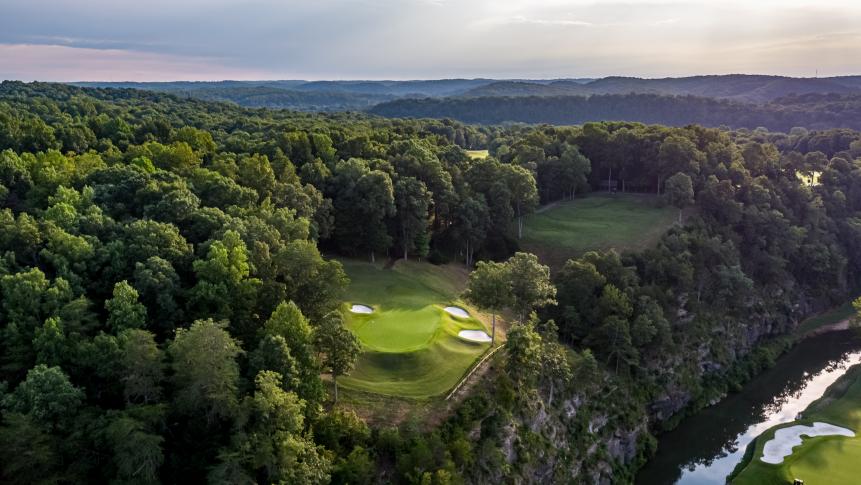 Ryan Montgomery/Courtesy of the club Private 167. (167) The Golf Club of Tennessee Kingston Springs, TN 4.4 12 Panelists
Ryan Montgomery/Courtesy of the club Private 167. (167) The Golf Club of Tennessee Kingston Springs, TN 4.4 12 Panelists
- Best In State
- Second 100 Greatest
In the early 1990s, Tom Fazio, assisted by longtime associate Tom Marzolf, designed a sprawling golf-only layout just west of Nashville. They routed it over 317 acres, incorporating dense forest, rocky ridges and a river valley. Its first two holes play along the flat valley of Brush Creek, while the par-4 third runs uphill through thick trees to a greensite on a bluff overlooking the valley. Four, a 200-yard par 3, requires a carry over a chasm that drops to the river. The par-3 eighth plays directly over the river, while the dogleg-right par-4 ninth hugs its rocky edge. After the par-3 10th, in a box-canyon to a green backdropped by tall shale outcropping and cascading springs, much of the back nine is in open meadowland. Sixteen is yet another par 3 over Brush Creek, the short par-5 17th has narrow dual fairways and par-4 18th doglegs left over the river. Fairways are zoysia grass, greens are Penncross bentgrass and roughs are fescue, native grasses and wildflowers. The club’s second course, desinged by Gil Hanse and Jim Wagner and called the Upper, traversing the forested foothills above the Fazio Lower course, opened for play in 2024. View Course  Courtesy of Doug Burke Private 168. (182) Glenwild Golf Club & Spa Park City, UT 4.4 15 Panelists
Courtesy of Doug Burke Private 168. (182) Glenwild Golf Club & Spa Park City, UT 4.4 15 Panelists
- Best In State
- Second 100 Greatest
Glenwild Golf Club & Spa sits on a meadow valley north of Park City, offering invigorating vistas of the Wasatch Mountain Range surrounding the community. Tom Fazio was given first dibs on the land for his 18 holes, with developers agreeing to plot homesites only after he’d completed his routing. So he clustered holes together, positioned some holes along a couple of irrigation lakes and linked the lakes via a network of streams and cascading waterfalls. The outer rough framing holes consists of native sagebrush, along with patches of flowering purple flax and transplanted aspen, chokecherry, maple, willow, spruce and Austrian pine. Enough trees were transplanted to define targets, but not so many as to block panoramic views. View Course 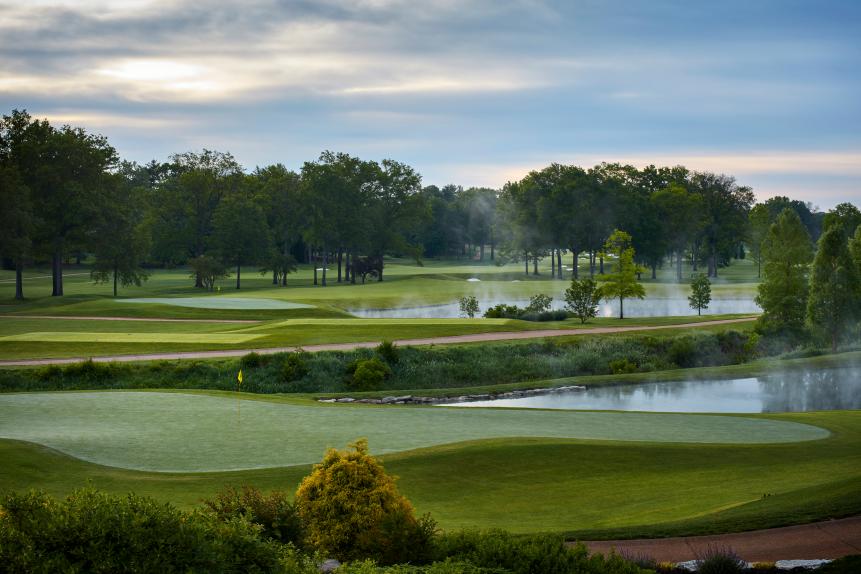 Courtesy of Gary Kellner Private 169. (165) Bellerive Country Club Saint Louis, MO 4.5 11 Panelists
Courtesy of Gary Kellner Private 169. (165) Bellerive Country Club Saint Louis, MO 4.5 11 Panelists
- Second 100 Greatest
- Best In State
Once the darling of the USGA, which awarded this Robert Trent Jones design the 1965 U.S. Open, making it the second youngest course to host an Open in the 20th century (after Northwood in Dallas), Bellerive is now favored by the PGA of America, which successfully concluded the 2018 PGA Championship on it. The polished course that hosted the PGA is a far cry from the immature one of 1965. Hardwoods along holes now have 60 years worth of growth, fairways are now Zoysia and architect Rees Jones has replaced his father’s bunkering with that of his own style, positioned farther off the tees to challenge big hitters. Rees also filled in a pond in front of the 17th green and added chipping areas next to several putting surfaces. View Course Private 170. (NEW) Hollywood Golf Club Deal, NJ 4.7 11 Panelists
- Second 100 Greatest
- Best In State
Walter Travis was a man of many talents. As a player he won three U.S. Amateur titles and one British Amateur, and his 80-percent match win percentage ranks among the sport’s all-time best. He was a writer, editor and publisher of The American Golfer in addition to designing over two dozen golf courses. His greatest skill might have been bunkering courses. His work revamping Garden City in the early 1900s—adding, moving and deepening the bunkers as well as rebuilding the greens—transformed that course into what it is today, but his most ambitious work is at Hollywood. The elaborate bunker shapes and arrangements are nothing short of dazzling, especially as they’ve been sharpened and polished by Brian Schneider of Renaissance Golf, along with co-designer Blake Conant. They lay out like arrangements of gemstones and the spots on a jungle cat, varying from the size of a mansion parlor to little more than a bread box. Anything like it attempted today would be considered garish, but Travis’ Beaux Art bunkering at Hollywood is a study in artistry. View Course
The Reserve at Moonlight Basin is just the third course from Montana to appear in the national rankings, joining Tom Doak’s Rock Creek Cattle Company (No. 56) and Robert Trent Jones’ Yellowstone C.C., which surfaced in the 1960s on the list of America’s “Toughest” courses. Located near Big Sky at an elevation of 7,500 feet above sea level, the Jack Nicklaus design is the highest (in altitude) in the rankings. Big sky is apt—the course was built on the site of an old ski mountain with 360-degree panoramas of the surrounding Rockies, and the impressively large holes race, slalom and dive across circuits of terrain that twist different directions through the wilderness. With numerous downhill shots through the thin air, the championship yardage of 8,000 yards doesn’t seem egregious, and scoring well actually requires a high degree control in judging where the ball will carry and settle. The epic vistas of holes like the par 4 first and par 5 17th (at over 700 yards) are sights to behold, for golfers and non-golfers alike.
View Course 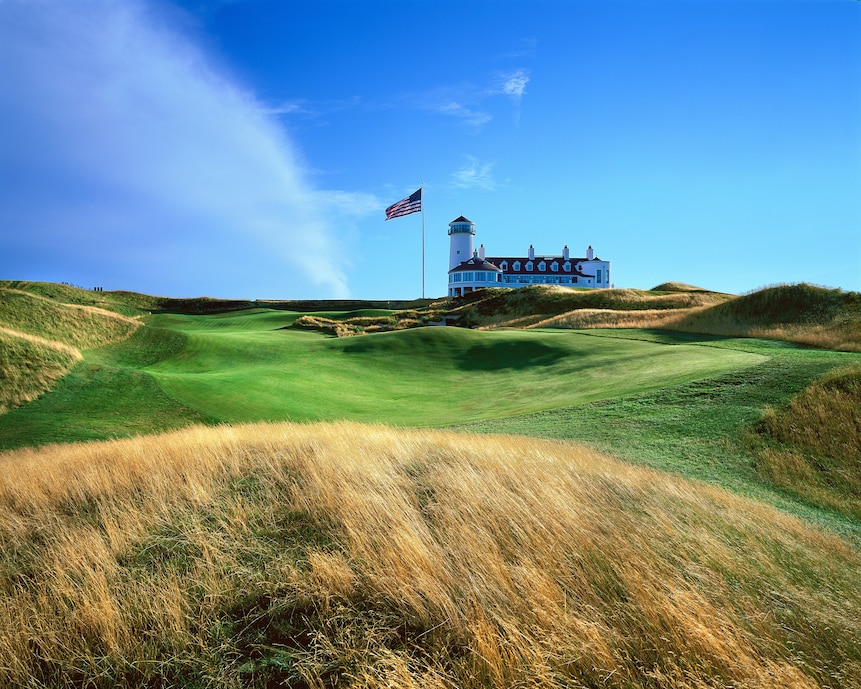 Courtesy of Evan schiller Private 177. (158) Bayonne Golf Club Bayonne, NJ 4.6 16 Panelists
Courtesy of Evan schiller Private 177. (158) Bayonne Golf Club Bayonne, NJ 4.6 16 Panelists
- Second 100 Greatest
- Best In State
Both Bayonne Golf Club and its neighbor, No. 194 Liberty National G.C., were built at the same time, part of a massive transformation of the Jersey shoreline along the Hudson River and New York Harbor. Bayonne was built on an old sanitary landfill covered with 7 million cubic yards of fill, much of it dredged from the harbor to efforts to make the harbor deep enough for supertankers. The deposits were piled up to 10 stories high, which developer-designer Eric Bergstol then shaped into towering faux sand dunes. The course is an ode to Irish links, with no trees, cart paths or level lies. Fairways flow down narrow valleys, edged by steep slopes laden with tall, wavy fescues. Bunkers are deep and often fearsome. A few greens sit right above the harbor and all putting surfaces have confounding humps, bumps and rolls. Tucked away down a bumpy, unpaved road past a strip mall in blue-collar Bayonne, N.J. is this private, walking-only enclave.
View Course .jpg.rend.hgtvcom.861.485.suffix/1644519945505.jpeg) LC Lambrecht Public 178. (169) Streamsong Resort: Black Bowling Green, FL 4.5 29 Panelists
LC Lambrecht Public 178. (169) Streamsong Resort: Black Bowling Green, FL 4.5 29 Panelists
- Best In State
- 100 Greatest Public
- Second 100 Greatest
Gil Hanse’s Black Course at Streamsong, Golf Digest’s Best New Public Course of 2018, sits a mile south of the resort’s Red and Blue courses, with its own clubhouse and personality. Reshaped from a decades-old phosphate strip mine that produced tall spoil mounds, Hanse provided strategic character by building a hidden punchbowl green at nine, dual putting surfaces at 13, incorporating a meandering creek on the par-5 fourth and a lagoon cove to guard the 18th green. Both the putting surfaces and the chipping areas surrounding them were grassed in MiniVerde, and today both are mowed at a single height, resulting in some of the biggest, most complex greens found on our national ranking along with Landmand, No. 155. One Streamsong insider calls the Black greens “polarizing;” we call them tremendous fun. View Course 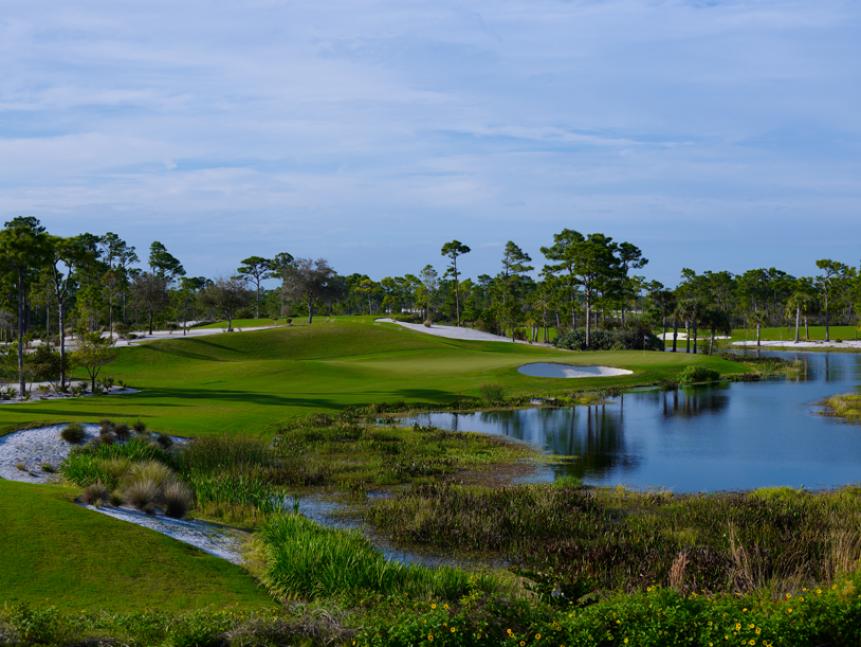 Courtesy of the club/LC Lambrecht Private 179. (179) McArthur Golf Club Hobe Sound, FL 4.5 2 Panelists
Courtesy of the club/LC Lambrecht Private 179. (179) McArthur Golf Club Hobe Sound, FL 4.5 2 Panelists
- Best In State
- Second 100 Greatest
If there’s such a thing as an undiscovered Tom Fazio design, it’s McArthur Golf Club, a players-only layout he did in conjunction with PGA Tour star Nick Price. It’s little-known because of its neighbors, No. 109 Jupiter Hills, a few miles south, Hobe Sound G.C., one of Joe Lee’s finest, just a few miles closer, and Greg Norman’s Medalist right next door. McArthur sits astride the same sand ridge upon which Jupiter Hills and Medalist were built, and while Fazio had to deal with wetlands and easements in his routing, he framed each hole with acres of exposed white sand in the form of dunes, slopes and hollows to provide McArthur with a singularly stunning look that’s unlike any of its rivals. With those wide expanses of sand, McArthur started a trend that continues today.
View Course 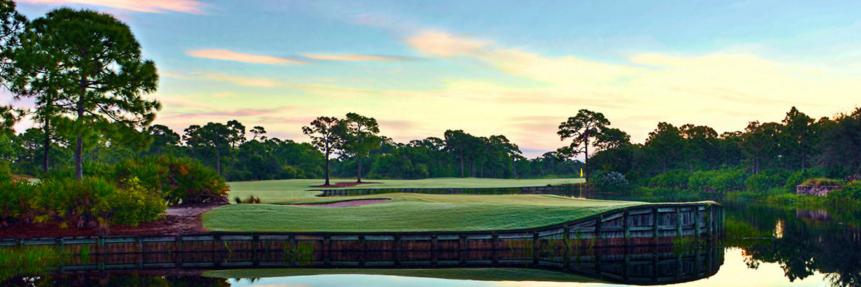 Courtesy of Nicklaus Design Private 180. (NEW) The Bear’s Club Jupiter, FL 4.3 6 Panelists
Courtesy of Nicklaus Design Private 180. (NEW) The Bear’s Club Jupiter, FL 4.3 6 Panelists
- Best In State
From Golf Digest Architecture Editor emeritus Ron Whitten: The Bear’s Club marked a transition point in Jack Nicklaus’ design outlook when it opened in 1999. His architecture had typically been analytical and, while still lovely, oriented toward factoring how players might break down the features tactically. That strategic backbone is present in The Bear’s Club, but the team approached the design more holistically than they had previously, factoring in aesthetics to an unprecedented degree. Instead of building holes on a golf site, Jack and his associates created a golf environment, expanding and enhancing a dune ridge running through the low pine and palmetto scrub and anchoring large, sensuous bunkers into the native vegetation.
The course is part of an upscale residential development near the Intracoastal Waterway, but it blends so well you wouldn’t know it. The change in perspective that Nicklaus Design developed at The Bear’s Club pushed the firm toward similar successes in the 2000s like Sebonack (with Tom Doak), The Concession and Mayacama.
Explore more about Bear’s Club with our complete review here—including bonus photography and ratings from our expert panelists.
View Course 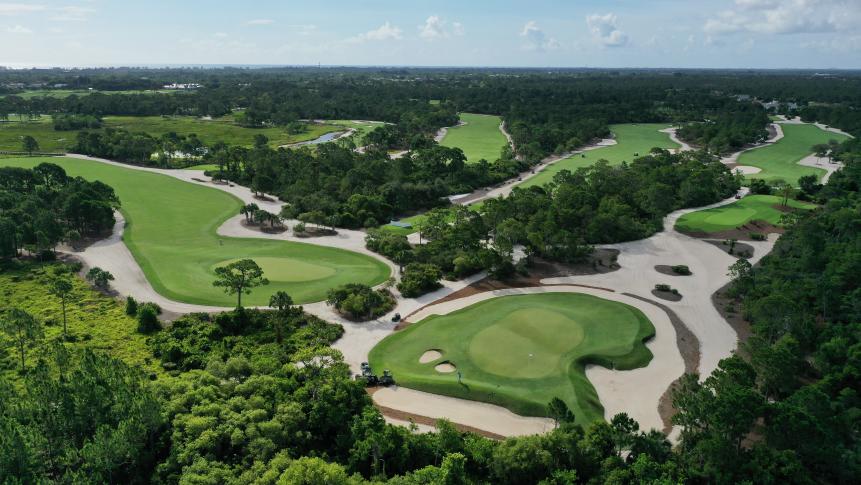 Cliff Hawkins/Getty Images Private 181. (NEW) Medalist Golf Club Hobe Sound, FL 4.3 9 Panelists
Cliff Hawkins/Getty Images Private 181. (NEW) Medalist Golf Club Hobe Sound, FL 4.3 9 Panelists
- Second 100 Greatest
- Best In State
Medalist is a long, demanding course that can stretch out to roughly 7,600 yards, a necessary requirement when the membership includes Tiger Woods, Dustin Johnson, Rory McIlroy, Brooks Koepka and many more of the world’s top professional players. They like The Medalist for the relaxed atmosphere and local convenience, but also because it’s a demanding driving course—the holes circle through an undeveloped sanctuary of wetlands and low scrub vegetation one parcel south of McArthur (No. 179) and are buffeted by the strong Atlantic crosswinds from every direction. Pete Dye designed Medalist with co-founder Greg Norman (this was one of Norman’s first U.S. designs) and the course features Dye’s S-shaped holes curling around sand buffers, slinky ground contour, and small, low-profile greens that bleed into short-grass surrounds. The course had undergone numerous modifications and formalizations in the late 1990s and early 2000s, but Bobby Weed reclaimed much of original Dye character during a 2015 renovation.
View Course 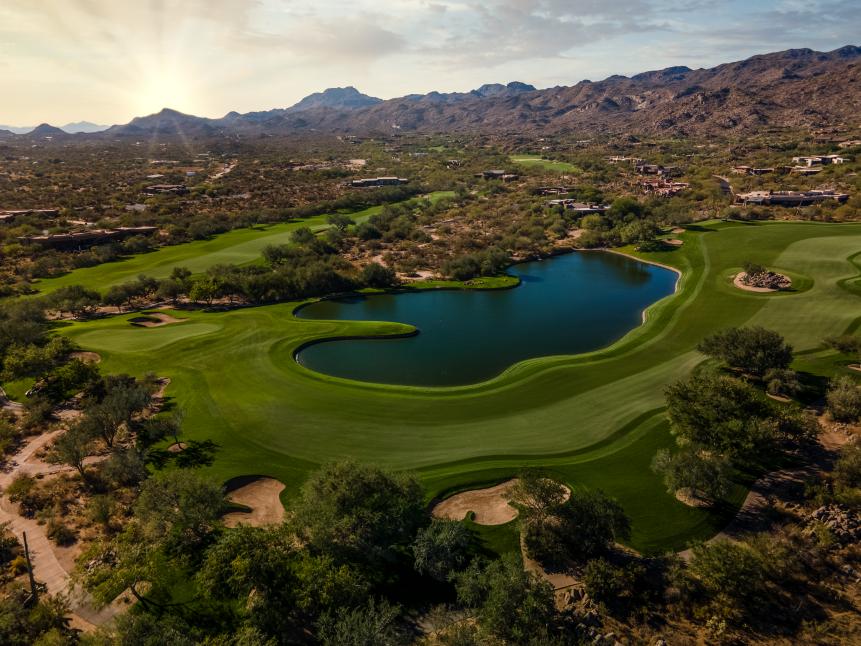 Private 182. (184) Stone Canyon Tucson, AZ 4.5 18 Panelists
Private 182. (184) Stone Canyon Tucson, AZ 4.5 18 Panelists
- Best In State
The Stone Canyon Club, which climbs the slopes of the Tortolita Mountains north of Tucson, is considered the consummate desert design of the late golf architect Jay Morrish. Restricted by Arizona law to 90 acres of grass, Morrish’s routing demands forced carries over barrancas off several tees, but not into any green. Artful contouring mimics the ebb and flow of the rugged terrain, bunkers seem spun by nature and the glorious scenery, which includes the Catalina Mountains at the east end of the Sonoran desert, is spiked with Saguaro cactus. Ancient granite boulders and outcroppings don’t just frame holes, but play an integral part in many design strategies. Stone Canyon is a fitting punctuation to Morrish’s sterling career. View Course  Brian Oar Public 183. (183) Gamble Sands Golf Club Brewster, WA 4.5 24 Panelists
Brian Oar Public 183. (183) Gamble Sands Golf Club Brewster, WA 4.5 24 Panelists
- Best In State
- Second 100 Greatest
- 100 Greatest Public
The winner of Golf Digest’s Best New Course of 2014 award, Gamble Sands sits atop a sprawling, treeless plateau of sandy desert overlooking Washington’s Columbia River Valley. The extremely playable layout is oversized in every respect, with enormously wide fairways, gigantic greens, no rough and some of the most panoramic vistas around. In using “friendly contours” that divert shots away from bunkers and toward targets, designer David Kidd wants everybody to have fun. He hopes good players will relish opportunities to score low and high handicappers will post their best round ever. With three reachable par 4s on the 18, that’s a possibility. Of course, Gamble Sands was Kidd’s inspiration for his No. 158 Mammoth Dunes.
View Course 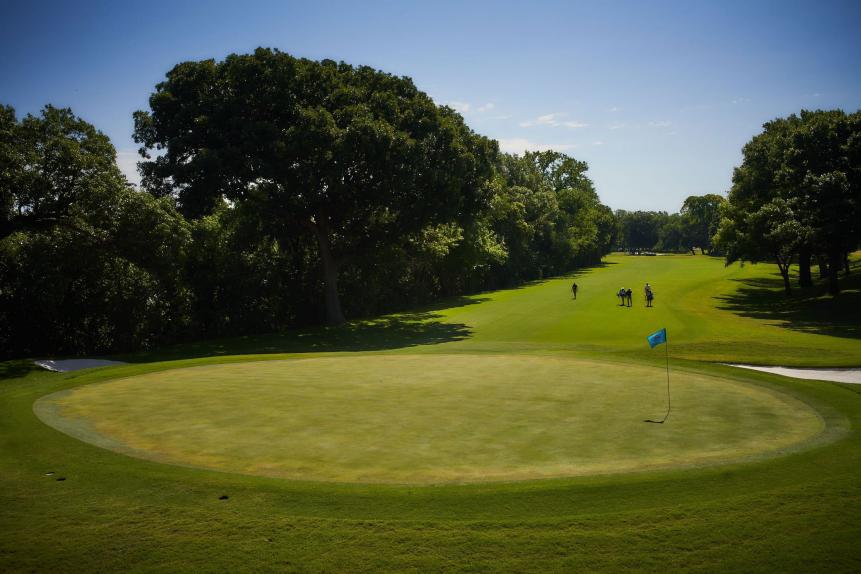 Darren Carroll for Golf Digest Private 184. (161) Colonial Country Club Fort Worth, TX 3.5 7 Panelists
Darren Carroll for Golf Digest Private 184. (161) Colonial Country Club Fort Worth, TX 3.5 7 Panelists
- Second 100 Greatest
- Best In State
We give credit to Texas golf historian Frances G. Trimble for establishing the fact that Perry Maxwell, not John Bredemus, originally designed Colonial Country Club for Fort Worth businessman Marvin Leonard. Both architects submitted routings. Maxwell’s was used, while Bredemus supervised construction. Colonial sported the first bentgrass greens in Texas when it opened in 1936. In 1939, the USGA awarded Colonial its 1941 U.S. Open, the first ever in Texas, so Leonard brought Maxwell back to toughen the course. He added 56 bunkers and created the present par-3 fourth and par-4 fifth (two of the famed Horrible Horseshoe trio of holes) and a par-3 13th (since replaced following a 1968 rechanneling of the Trinity River). Keith Foster’s 2008 restoration wasn’t to everyone’s satisfaction. In 2023, Gil Hanse and Jim Wagner initiated a warp-speed, total renovation of the design using Maxwell’s 1941 modifications as a roadmap, a similar treatment they implemented when remodelinig Maxwell’s Southern Hills in 2018, on display at the 2022 PGA Championship. This ranking does not reflect the Hanse/Wagner work: Their changes will be revealed in the 2027-’28 results. View Course 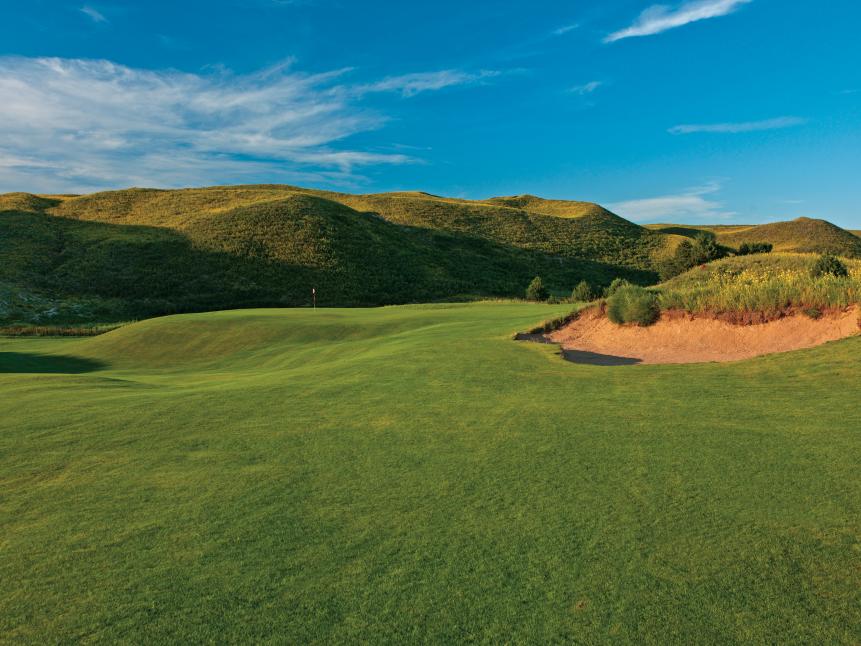 LC Lambrecht Private 185. (154) Dismal River Club: Red Mullen, NE 4.5 12 Panelists
LC Lambrecht Private 185. (154) Dismal River Club: Red Mullen, NE 4.5 12 Panelists
- Best In State
In adding a companion 18 to the Jack Nicklaus-designed White Course at Dismal River, Tom Doak created as organic and amorphous a design as anyone is liable to do in the U.S., simply following the flow of the land and locating greens with breathtaking backdrops. Doak walked the site several times before routing it, utilizing the existing folds of the land for his holes. His associate Brian Slawnik then mowed out the proposed fairways, which spread across the landscape into wide splotches, even flowing into adjacent fairways. Then Doak personally hand-shaped the greens. All but four of the putting surfaces took less than an hour apiece to transform from raw land to seedbed. There are no formal tee boxes, just broad, freeform pads with a couple of yardage posts. One gets the feeling that you could play the Red Course backwards to equal delight. View Course 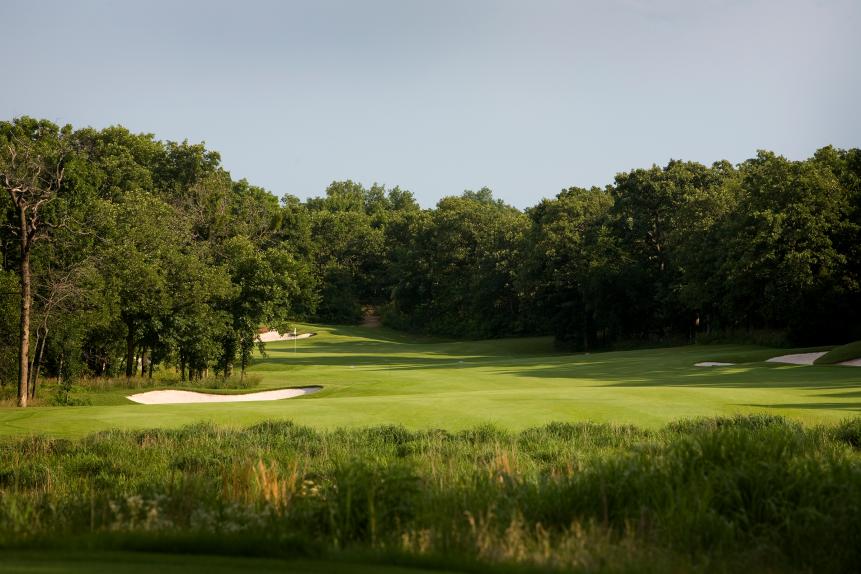 Gary Lawson/Courtesy of the club Public 186. (NEW) Karsten Creek Golf Club Stillwater, OK 4.1 7 Panelists
Gary Lawson/Courtesy of the club Public 186. (NEW) Karsten Creek Golf Club Stillwater, OK 4.1 7 Panelists
- Best In State
Karsten Creek opened in 1994, but it’s Tom Fazio’s newest addition to the national rankings. A former winner of Golf Digest’s Best New Public Course title in 1994, the course was developed by Oklahoma State University and thus often appears toward the top of rankings of the best collegiate courses in America. The first nine holes run out and back through a tightly wooded valley with slender fairways and modestly sized greens that demand extreme accuracy. The topography opens slightly more on the second nine as the holes gradually work their way toward the edge of a reservoir, finishing with a par 5 that plays across the water before running along the shoreline toward the green. Though known as a course designed for high caliber players, there’s also admirable restraint in the architecture with less than 50 bunkers as Fazio allowed the site’s forests and tumbling ground contour handle the defense. View Course  Martin Miller Private 187. (180) Sherwood Country Club Thousand Oaks, CA 4.5 6 Panelists
Martin Miller Private 187. (180) Sherwood Country Club Thousand Oaks, CA 4.5 6 Panelists
- Best In State
- Second 100 Greatest
When Jack Nicklaus completed Sherwood Country Club for industrialist David Murdock in the late 1980s, critics immediately compared it to Shadow Creek, which Nicklaus felt was unfair, since his land—a river valley with homesites on high surrounding hills—was far more natural than the barren Vegas desert. But critics were comparing ledger books. They spent lots of money at Sherwood. Several hundred mature oaks were transplanted at an estimated cost of $6 million (over $15 million in today’s dollars). The massive boulders edging some fairways were trucked in as well, and the ponds and streams guarding landing areas and greens were manufactured by experts in that business. In the end, it added up to producing one of the best courses money could buy, until the drought of 2014. Nicklaus returned in 2016 to approve agronomic improvements that reduced water use by 25 percent. Sherwood remains a great layout, but more austere in presentation. View Course 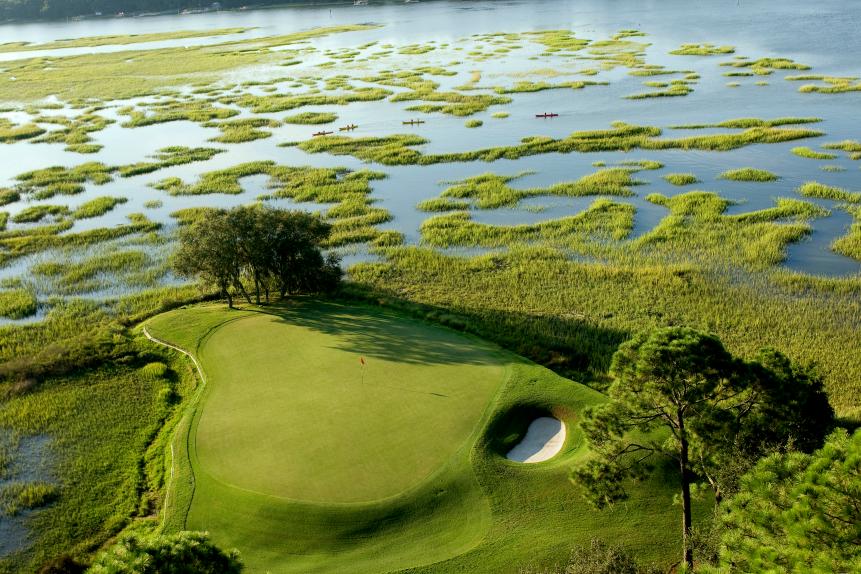 Rob Kaufman / Kaufman Photography Private 188. (173) Long Cove Club Hilton Head Island, SC 4.4 8 Panelists
Rob Kaufman / Kaufman Photography Private 188. (173) Long Cove Club Hilton Head Island, SC 4.4 8 Panelists
- Best In State
Long Cove was originally routed by Frank Duane and his then-partner Arnold Palmer in the early 1970s. Then Pete Dye was offered the job, but turned it down in order to concentrate on construction of No. 41 TPC Sawgrass. Once TPC was finished, Dye was persuaded to build Long Cove. Having previously done No. 160 Harbour Town just down the road, Dye wanted to do something different, so he installed knobs and mounds and framing berms, shaped some remarkably large greens and built two holes skirting the Colleton River. His construction crew contained half a dozen youngsters who would ultimately became golf architects, including construction supervisor Bobby Weed, Tom Doak, David Savic, Ron Farris, Scott Pool and Pete’s younger son, P.B. In 2018, Weed, author of No. 105 Olde Farm, was picked to restore Pete’s original design, which had grown shaggy around the edges. Now golfers can again run the ball onto 16 of the 18 greens.
View Course  Channing Benjamin Private 189. (187) Tradition Golf Club La Quinta, CA 4.7 10 Panelists
Channing Benjamin Private 189. (187) Tradition Golf Club La Quinta, CA 4.7 10 Panelists
- Best In State
Tradition Golf Club was intended to be Palmer Course Design’s answer to the most opulent private courses in greater Palm Springs, such as No. 91 The Quarry at La Quinta and Vintage Club (Mountain). Built on the old Hacienda del Gato Ranch, the front nine is routed over rolling desert and through a flood-control basin, while most of the back nine is tucked at the base of the rocky slopes of the Santa Rosa Mountains, with three holes (15th through 17th) curving around a 90-degree bend dubbed the “Coyote Canyon.” Almost every hole here has a distinguishing feature, from desert wash to serpentine waste bunker to double fairway to boulder landscaping to cascading waterfalls. The common overall theme are fields of wildflowers spread throughout the far roughs. During a 2005 Golf Digest Panelist Summit, Arnold Palmer explained he had those flowers planted to appeal to his first wife, Winnie, who loved flora much more than golf.
View Course  Courtesy of the club Private 190. (186) Lost Dunes Golf Club Bridgman, MI 4.5 13 Panelists
Courtesy of the club Private 190. (186) Lost Dunes Golf Club Bridgman, MI 4.5 13 Panelists
- Second 100 Greatest
- Best In State
Anyone who has ever played Mike Keiser’s terrific nine-hole Dunes Club in New Buffalo, Mich.—one of the best nine-hole courses in America, if not the best—is familiar with the “lost dunes” that exist along that stretch of Lake Michigan in southeast Michigan. Lost Dunes Golf Club, a half hour north along the same sand ridge, was created from an old sand quarry, lined on three sides by 60-foot-tall forested sand dunes, bottomed by two deep pit lakes and traversed through the center by I-94. (Nothing wrong with that: No. 5 Oakmont is bisected by the Pennsylvania Turnpike.) There was still plenty of sand left in the quarry, which allowed Doak and his team to create some vast sandy waste areas as well as windblown dunes-style bunkers. Since the greens were shaped from native sand, the green contours are very bold. “The wildest set of greens I’ve ever built,” said Doak soon after it opened, but long before Ballyneal, Sebonack or Pinehurst #10. When Keiser played the course on opening day, he was considering hiring Doak to design Pacific Dunes. “I can’t have him build these kind of greens for the retail golfer,” Keiser said. “Doak’s a professional,” he was told by another in his group. “He’ll give you whatever you want.” Sure enough, Doak was hired for Pacific Dunes, the Bandon course that ranks No. 23 in the nation. View Course  Private 191. (175) Ballyhack Golf Club Roanoke, VA 4.4 25 Panelists
Private 191. (175) Ballyhack Golf Club Roanoke, VA 4.4 25 Panelists
- Best In State
After architect Lester George completed his design of No. 74 Kinloch, with its dual fairways, optional routes and triple-fairway ninth, he relished the opportunity to do it again on a site that might give him even more flexibility. He got that chance in hills outside Roanoke, and his Ballyhack design is Kinloch on steroids, with vast landing areas, joined fairways, center bunkers, double greens and a plethora of choices off the tees and into the greens. Call Ballyhack a pluperfect blend of challenging shots, rugged terrain and nasty native roughs, The Ballybunion of southern Virginia.
View Course 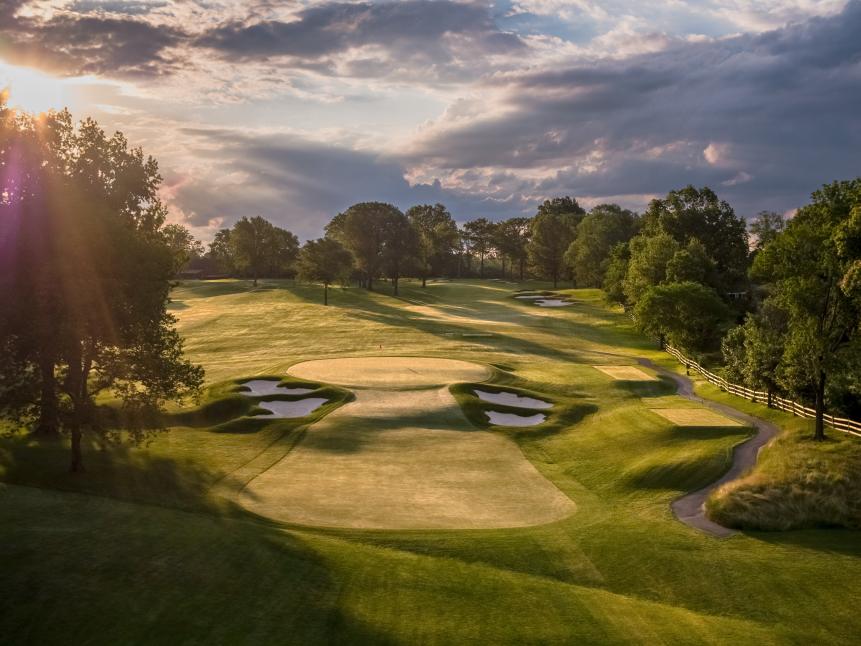 Courtesy of the club Private 192. (181) Canterbury Golf Club Beachwood, OH 4.4 17 Panelists
Courtesy of the club Private 192. (181) Canterbury Golf Club Beachwood, OH 4.4 17 Panelists
- Second 100 Greatest
- Best In State
In doing golf course restoration work, golf architects have to be like ghost writers, doing the best work they can while burying their egos and desire for personal attention. Nobody does that better than Bruce Hepner, who has consistently enhanced other people’s architecture without complaint. Canterbury Golf Club had long been considered one of the greats, the site of several major championships, including the 1973 PGA Championship won by Jack Nicklaus. But when Hepner first toured the Herbert Strong design, he found it over-treed and overdue for a bunker renovation. The club continues to understand the wisdom of fine-tuning rather than revamping classical architecture and now works with Keith Rhebb and Riley Johns, two talented associates of Bill Coore and Ben Crenshaw, who have assumed the role of Canterbury caretakers by continuing to selectively address tree issues and other other restorative detailing. View Course 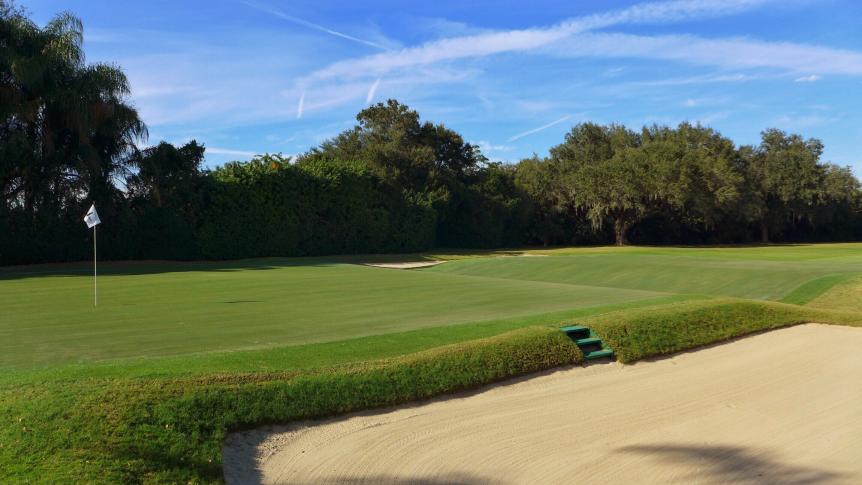 Jon Cavalier Private 193. (174) Mountain Lake Golf Course Lake Wales, FL 4.4 16 Panelists
Jon Cavalier Private 193. (174) Mountain Lake Golf Course Lake Wales, FL 4.4 16 Panelists
- Best In State
Seth Raynor built Mountain Lake, a millionaires’ winter retreat, in two stages, completing one nine in 1917 and the other four years later. As he did on all his projects, Raynor produced some “template holes” and some originals. At Mountain Lake, his par-3 fifth sports a very authentic Biarritz green and the seventh is recognizable as a Road Hole. But the par-3 11th, designed with a canted, slanted Redan green, has been reworked in recent years, with the front half of the putting surface flattened to create pin positions just above a 10-foot-deep frontal bunker. Restoration expert Ron Prichard and his associate Tyler Rae have been reclaiming Raynor features for over seven years, working most recently on perfecting the unique “circus ring” contour in the middle of the ninth green. View Course  Courtesy of Evan Schiller Private 194. (197) Liberty National Golf Club Jersey City, NJ 4.5 7 Panelists
Courtesy of Evan Schiller Private 194. (197) Liberty National Golf Club Jersey City, NJ 4.5 7 Panelists
- Best In State
Like No. 177 Bayonne Golf Club to the south, Liberty National Golf Club was a reclamation project, a super-expensive Superfund clean-up of New York harbor, replacing a putrid assortment of oil refineries and storage tanks with an intriguing combination of green grass and golden rough. By spreading 2 million cubic yards of fresh soil over the capped toxic wastes, architect Bob Cupp and pro-consultant Tom Kite started building something meant to be a major tournament venue. It has narrow bent-grass fairways, just 25 to 27 yards wide, and tiny, flawless bent-grass greens, averaging just 3,400 square feet. With several hundred mature hardwoods transplanted along the fairways, a couple of rock-lined streams edging greens and winding cart paths fashioned from brick, Liberty National looks like what Central Park might be if it were a golf course Liberty National sits just three miles southwest of the tip of Manhattan, so the views of the NYC skyline, and the Statue of Liberty, are tremendous.
View Course  Chris Keane Private 195. (172) Charlotte Country Club Charlotte, NC 4.3 22 Panelists
Chris Keane Private 195. (172) Charlotte Country Club Charlotte, NC 4.3 22 Panelists
- Best In State
There was never a dispute about the Donald Ross pedigree of Charlotte Country Club. Ross expanded its original nine-hole course in 1915, remodeled it while adding grass greens in 1925 and further tinkered with it in the 1940s. But in the 1960s, Robert Trent Jones rearranged holes to create a practice range and redesigned the others. Still, it was until 2007 that the club felt it should restore its Ross design. But Ross-expert Ron Prichard convinced them it wasn’t smart to simply replicate holes from a 70-year-old aerial photograph, because golf technology has changed. Prichard rebuilt all greens and bunkers in the style of Ross, but improvised the green contours based on what he’s observed at other Ross layouts. He also installed SubAir cooling systems beneath the greens, one example of how times have certainly changed since Ross’ day. View Course  Jeffrey Bertch Private 196. (NEW) Sankaty Head Golf Club Siasconset, MA 4.6 11 Panelists
Jeffrey Bertch Private 196. (NEW) Sankaty Head Golf Club Siasconset, MA 4.6 11 Panelists
- Second 100 Greatest
- Best In State
Some of America’s greatest golf courses were designed by first-time novices and non-architects: Merion, Oakmont, Pine Valley and Pebble Beach all fall into this category. Sankaty Head on the eastern edge of Nantucket Island does, too. It was built by a local amateur player named Emerson Armstrong, but judging by the circuitous routing and attractive bunkering (honed in recent years by Jim Urbina) that recalls some of Donald Ross’ best work, you’d be excused for assuming Armstrong had done this dozens of times. The roomy holes unfurl across open fields of fescue, riding the site’s swales and ridges like an English links. True to the inspiration the greens are open in front to receive running shots played under the exacting Atlantic winds, and the collection of par 3s are about as tough and beautiful as it gets. View Course 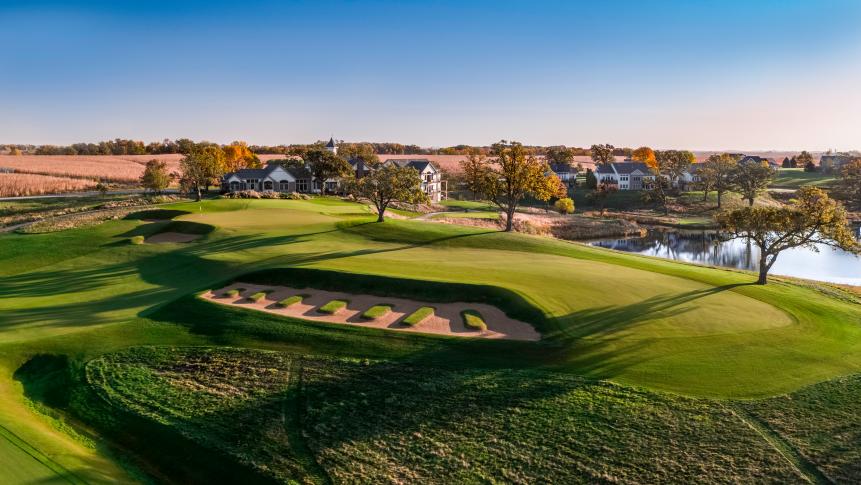 Premier Aerials/Courtesy of the club Private 197. (NEW) The Harvester Club Rhodes, IA 4.4 16 Panelists
Premier Aerials/Courtesy of the club Private 197. (NEW) The Harvester Club Rhodes, IA 4.4 16 Panelists
- Second 100 Greatest
- Best In State
Though barely two decades old, The Harvester Club has led an adventurous life. It came into the world at the end of the 1990s as a course of its time: that is, an upscale daily-fee design 30 minutes northeast of Des Moines with snaking fairways and curvacious, modern-looking bunkering. A renovation in 2010 began to alter their character, roughing up the edges and giving the course a more rustic look. In 2017, the owners reversed course and took the club private, hiring original architect Keith Foster to remove trees to better highlight the site’s hills and prairie terrain and to revamp the holes with new tees and wider, less snaking fairways. Foster also reimagined the course as a paean to early 20th century architecture, constructing more squared-off greens, shifting new flat-bottomed grass-faced bunkers to more interesting and impactful locations, and adding thematic riffs on a Road Hole green, a Tillinghast-inspired Hell’s Half Acre, a Short Hole and an Oakmont-like Church Pews bunker. View Course 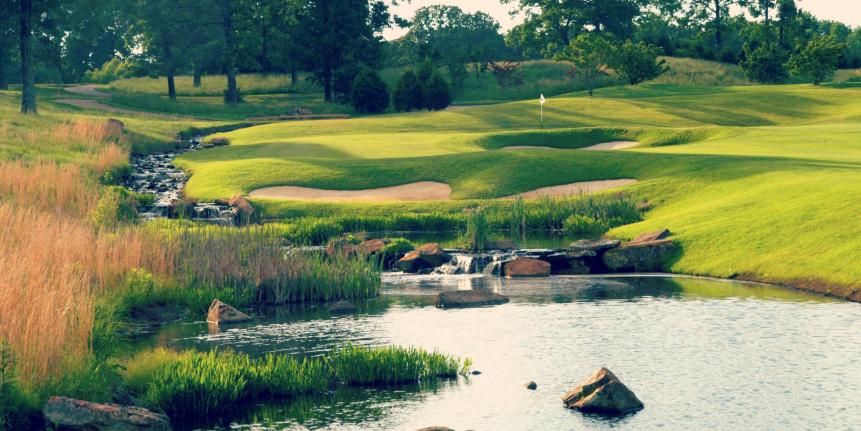 Private 198. (168) Spring Creek Ranch Collierville, TN 4.1 12 Panelists
Private 198. (168) Spring Creek Ranch Collierville, TN 4.1 12 Panelists
- Best In State
During the early decades of golf in the U.S., courses were developed on natural, open properties in rural areas, often on former farms or ranches where the rolling land dictated the character of the holes. This simple formula describes Spring Creek Ranch Golf Club, a bucolic, stand-alone golf facility located on an old ranch east of Memphis. The easygoing design was part of a philosophical shift in the way Nicklaus built courses, transitioning from an eye that emphasized shotmaking to a more genteel style of shaping sympathetic to a range of skill sets. That’s not to suggest Spring Creek Ranch is benign—the holes zig-zag around ponds and wetlands, jump creeks and dart through the woods. One of them, a double-fairway par 5, occupies a staggering 20 acres of land. View Course 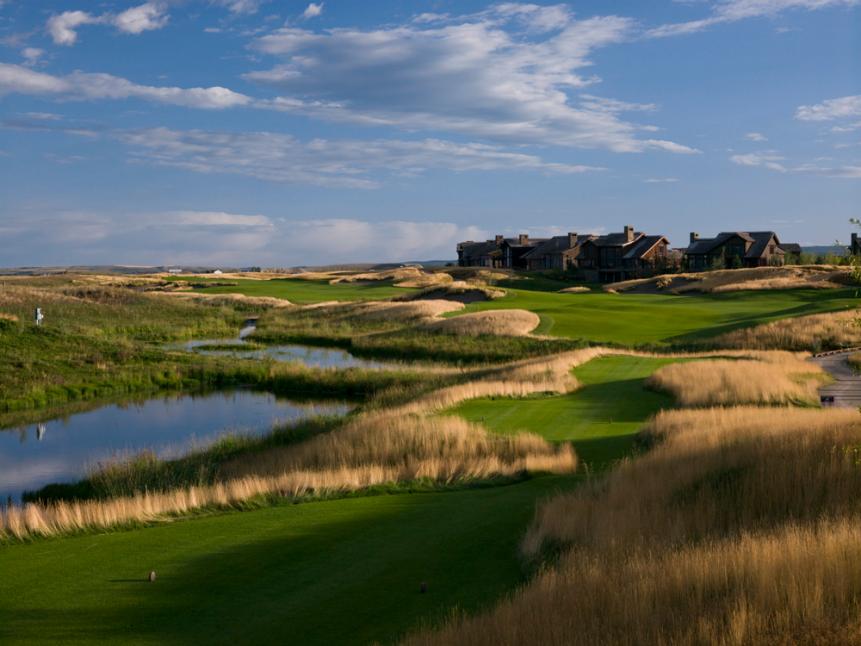 Courtesy of the club Private 199. (153) Tributary Driggs, ID 4.6 10 Panelists
Courtesy of the club Private 199. (153) Tributary Driggs, ID 4.6 10 Panelists
- Best In State
- Second 100 Greatest
David McLay Kidd built Huntsman Springs Golf Club for billionaire Jon Huntsman on an old cattle ranch in tiny Driggs, Idaho, on the west side of the Grand Teton Mountains. The site was originally flat and lifeless, between a highway and a river, with lots of wetland bogs. Kidd’s solution was to recess the entire course into the landscape to screen out undesirable buildings and generate some interesting topography—no small feat of imagination and engineering. Digging down meant the holes filled with water, so he designed a course with acres and acres of lakes, ponds and interconnecting streams. If all that sounds more like a Tom Fazio design than a David Kidd one, that’s understandable. For a Scot who loves bump-and-roll, Huntsman Springs, with bluegrass fairways and rough, is a radical departure. It also demonstrates his range as a designer. View Course %20-%20Jon%20Cavalier.jpeg.rend.hgtvcom.861.574.suffix/1573163057785.jpeg) Jon Cavalier Private 200. (193) Kiawah Island Club: River Johns Island, SC 4.2 6 Panelists
Jon Cavalier Private 200. (193) Kiawah Island Club: River Johns Island, SC 4.2 6 Panelists
- Best In State
Built half a decade before the club’s other 18, No. 166 Cassique, The River Course at Kiawah Island Club features an exquisite river setting. The course flows gently through forest and along lagoons the first six holes, then becomes truly great from seven to nine, with two holes playing around big Bass Pond and the ninth running along the marshy edge of the Kiawah River. The back nine repeats the rhythm, with play again beginning in forest and along ponds before a dunesy stretch scattered with live oaks and vast expanses of sand. The River Course concludes appropriately with 17 and 18 along the tidal wetlands of the Kiawah River. There’s nothing particularly original in the architecture of The River Course, as Fazio has done variations of these holes before. It some ways, it’s The Greatest Hits of Tom Fazio.
View Course
• • •
Explore Golf Digest’s new Course Reviews section where you can submit a star rating and evaluation on all the courses you’ve played. We’ve collected tens of thousands of reviews from our course-ranking panelists to deliver a premium experience, which includes course rankings, experts’ opinions, bonus course photography, videos and much more. Check it out here!
This article was originally published on golfdigest.com

